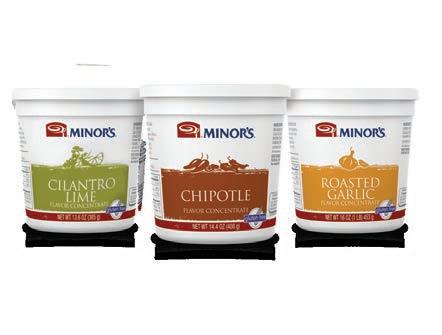National Convention preview
The surprising rise of non-alcoholic cocktails
Fried chicken gets the Master Chef treatment


The surprising rise of non-alcoholic cocktails
Fried chicken gets the Master Chef treatment




Made from fresh, local milk gathered only a few hours after milking, BelGioioso Fresh Mozzarella, Burrata and Stracciatella begin with quality ingredients and care. The result is a delicate, clean-flavored Fresh Mozzarella with a soft texture and porcelain white appearance – the finest available on the market today. Try our new Stracciatella

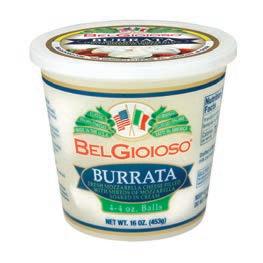

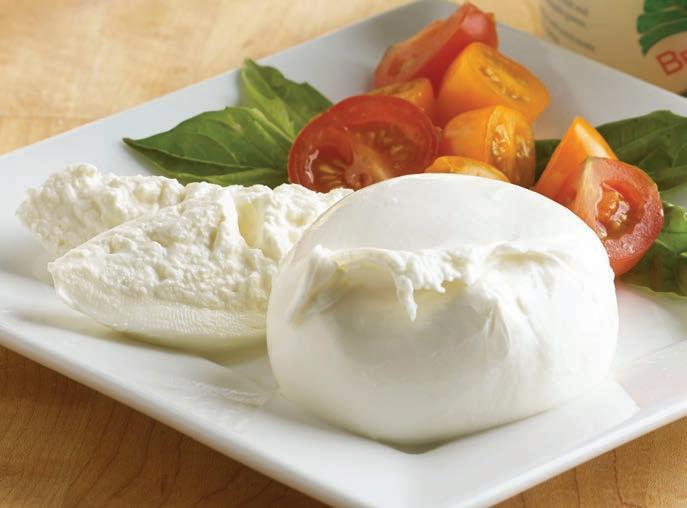



Available in waterpack tubs and cups, thermoform logs and balls, and slicing loaf.



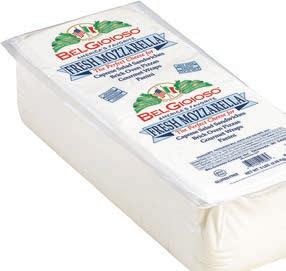


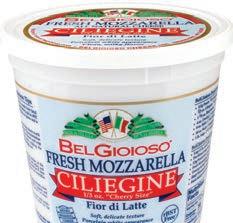

The next generation of culinary robots eclipses the tomato corers and stand mixers of the past. Should chefs be concerned?

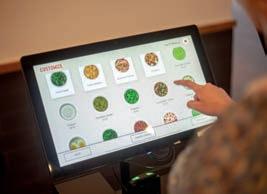
14
18
Main Course
Three Orlando spots poised to shift the city’s theme park reputation.
Pastry
The old rules of laminated pastry are being re-examined by modern bakers. Plus, how diner demand is driving Japanese restaurants to offer more desserts.
22
On the Side
Bartenders across the country are discovering the perks of less potent cocktails.
24
Classical vs. Modern
A Southern-fried classic gets the Certified Master Chef treatment.
34 Health
Why the farm-to-school trend goes beyond farm-to-table dining — and how chefs can help. Plus, why seaweed is the next trendy seafood.
38 Management
Sports venues everywhere are expanding beyond peanuts and Cracker Jacks. Cover
by Chris Sanchez
Assistant Editor
180 Center Place Way St. Augustine, FL 32095 (800) 624-9458 (904) 824-4468 Fax: (904) 940-0741
ncr@acfchefs.net • www.acfchefs.org
President
Stafford DeCambra, CEC®, CCE®, CCA®, AAC
Immediate Past President
Thomas Macrina, CEC, CCA, AAC
National Secretary
Kyle Richardson, CEC, CCE, AAC
National Treasurer
Christopher Donato, CEC, AAC
American Academy of Chefs Chair
Mark Wright, CEC, AAC
Vice President Central Region
Brian Hardy, CEC, CCA, AAC
Acting Vice President Northeast Region
Thomas Macrina, CEC, CCA, AAC
Vice President Southeast Region
Kimberly Brock Brown, CEPC®, CCA, AAC
Vice President Western Region
Carlton Brooks, CEPC, CCE, AAC
Executive Director Heidi Cramb
The National Culinary Review® (ISSN 0747-7716), July/August

2019, Volume 43, Number 4, is owned by the American Culinary Federation, Inc. (ACF) and is produced 6 times a year by ACF, located at 180 Center Place Way, St. Augustine, FL 32095. A digital subscription to the National Culinary Review® is included with ACF membership dues; print subscriptions are available to ACF members for $25 per year, domestic; nonmember subscriptions are $40. Material from the National Culinary Review®, in whole or in part, may not be reproduced without written permission. All views and opinions expressed in the National Culinary Review® are those of the author and do not necessarily reflect the views and opinions of the officers or members of ACF. Changes of mailing address should be sent to ACF’s national office: 180 Center Place Way, St. Augustine, FL 32095; (800) 624-9458; Fax (904) 940-0741.
The National Culinary Review® is mailed and periodical postage is paid at St. Augustine, Fla., and additional post offices.
POSTMASTER: Send address changes to the National Culinary Review®, 180 Center Place Way, St. Augustine, FL 32095.

When I began as a chef in the 1970s, the exciting tech arriving in the kitchen was the vertical mixer and the Buffalo Chopper. They certainly made work easier, but you don’t see them much anymore. That is the nature of new tech. It eventually becomes obsolete, replaced by something more efficient.
Earlier this year I saw a piece of equipment that can steam, microwave and grill in one unit and the resulting meal was flawless. Combitherms are routine in commercial kitchens. In Boston there’s a near-fully automated restaurant, Spyce, dreamed up by MIT students and backed by chefs Daniel Boulud and Thomas Keller. Cutting edge and culinary has always been a natural pairing.
Faster and cheaper robots are coming but I believe, with the right mindset, chefs will never be obsolete. We have to keep up. Think of tech as a new trend, one you master and then adapt for your own use. There will always be something “new” in our world, be it a technique, ingredient, or as we are seeing now, artificial intelligence (AI).
Our defense is our knowledge, based on our own life experiences and the art of serving real humans real food. Can a robot make a perfect hollandaise? Maybe. But could a robot improvise a menu when kiwis are delivered instead of kumquats? Can a robot adapt a dish to suit a finicky - but favorite - customer? Can a robot keep a kitchen staff engaged day after day? We are the creative force in the kitchen and robots, for all of their uses, are not renowned for creativity.
Perhaps we won’t need to personally supervise every dish in the not-so-distant future but think of the freedom this can provide you. What will you do with this extra time?
As always, the future is what you make it.
Stafford T. DeCambra, CEC, CCE, CCA, AAC National President American Culinary Federation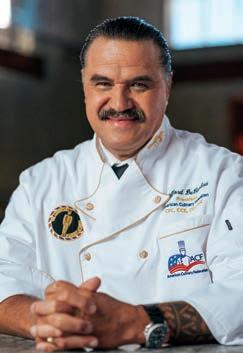
The chef robot will not take your job. Not if you don’t let it.
Cuando comencé como chef en la década de 1970, la emocionante nueva tecnología que acababa de llegar a la cocina era la batidora vertical y el Buffalo Chopper. Estas herramientas ciertamente hicieron el trabajo más fácil, pero ya no se las ve mucho. Esa es la naturaleza de la nueva tecnología. Con el tiempo se vuelve obsoleta y la reemplaza algo más eficiente.
A principios de este año, vi un equipo que puede cocinar al vapor, microondas y asar en una sola unidad, y la comida que producía era perfecta. Los hornos combinados Combitherm son habituales en las cocinas comerciales. En Boston hay un restaurante casi completamente automatizado, Spyce, concebido por estudiantes del MIT y respaldado por los chefs Daniel Boulud y Thomas Keller. Las expresiones "de vanguardia" y "culinario" siempre han ido de la mano.
Es un hecho que cada vez están llegando robots más rápidos y más baratos. Pero creo que, con la mentalidad correcta, los chefs nunca serán obsoletos. Tenemos que seguir el ritmo del avance tecnológico. Piensen en la tecnología como una nueva tendencia: una que puedan dominar y adaptar para su propio uso. Los nuevos avances (una técnica innovadora, un ingrediente inusual o un equipo artificialmente inteligente) están siempre a la vuelta de la esquina.
Nuestra defensa es nuestro conocimiento, basado en nuestras propias experiencias de vida y el arte de servir comida real a humanos reales. ¿Puede un robot hacer una salsa holandesa perfecta? Tal vez. Pero si una cocina recibe kiwis cuando ordenó quinotos, ¿podría un robot improvisar un nuevo menú? ¿Puede un robot improvisar con un plato para adaptarlo a un cliente delicado pero privilegiado? ¿Puede un robot mantener a un auxiliar de cocina ocupado día tras día? Nosotros somos la fuerza creativa en la cocina. Y los robots, independientemente de todos los usos que puedan tener, no son conocidos por su creatividad.
Tal vez no necesitemos supervisar personalmente cada plato en un futuro no muy lejano, pero piensen en la libertad que tendremos si podemos aprovechar esta facilidad. ¿Qué harán con el tiempo que les sobre?
Como siempre, el futuro será lo que ustedes hagan de él.
July 11, 2019 ACF National - NACUFS National Competition
Show Site: Sheraton Denver Downtown Hotel, Denver, CO
Show Chair: Christopher Henning - chenning@illinois.edu
Categories: W
July 25, 2019 ACF Chicago Chefs
Show Site: Galley 7102 Naval Station Great Lakes, Great Lakes, IL
Show Chair: Mike Artlip - Michael.Artlip@goodwillsew.com
Categories: SW
August 6–7, 2019 American Culinary Classic
Show Site: World Center Marriott, Orlando, FL
Show Chair: Steven Jilleba, CMC, CCE, AAC - classic@acfchefs.net
Categories: ACF Cold Food Individual Categories, Regional Team
Categories
Los chefs robots no se quedarán con su trabajo. No si ustedes no los dejan.
Read these recent Sizzle and Back of the House articles (and more coming each week!) on wearechefs.com


































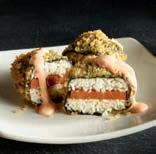
What it’s like to be an apprentice at the world’s toughest culinary exam
We spoke to some of the dedicated student chefs who assisted the candidates during the 2019 CMC exam.
How could chefs help combat food waste? Easy — feed people
Bradley Labarre, CEC, makes the case for a real effort to cut down on food waste by feeding the hungry.
After 82 years, Hawaii’s SPAM obsession continues to grow
Last year Hawaiians consumed 7 million cans of the canned lunch meat, in the form of SPAM musubi, SPAM cheesecake, SPAM loaded tater tots and more.
Classical vs. Modern: Sauerbraten
Christopher Tanner, CEC, AAC, reinvented classic German comfort food (a family tradition) with an immersion circulator and a lot of patience.

A digital subscription to NCR is included with ACF membership, but members can now get a one-year print subscription for just $25! Visit acfchefs.org/ncr to get yours today.
Follow the ACF on your favorite social media platforms:

@acfchefs
@acfchefs

@acf_chefs
















@acfchefs American Culinary Federation














What are you most excited to see or do at ACF National Convention: Orlando?
Tweet us your answer using the hashtag #ACFasks and we’ll retweet our favorites.
Our favorite #acfchefs Instagram photo of the month: Tag your Instagram photos with #acfchefs and you could see your image here in the next issue of NCR.

The Culinary Insider, the ACF’s bi-weekly newsletter, is a great source of timely information about events, certification, member discounts, the newest blog posts, competitions, contests and much more. Sign up at acfchefs.org/tci







































CREATINGMENUINSPIRATION AD BASQUE CHEESE 7.375X4.5-01 vecto HD.pdf 1 12/04/2019 09:01
















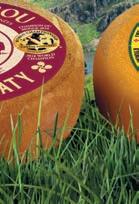
































Introducing Smithfield Culinary, a refreshing new name for a company you know so well. Because we share with you a passion for all things delicious, we immerse ourselves in the culinary community to become experts on the products, innovations and trends that create the very best opportunities for your business. Our job is to inspire you. To surprise you. And to enrich your knowledge. We hope you think of us as you consider your next culinary adventure. To learn more, call 888-327-6526 or visit SmithfieldCulinary.com.

John Minniti, CCE, AAC, HBOT, HOF, Chairperson of the Nominations and Election committee, is pleased to announce the results of the ACF National Board of Directors election. According to the results tallied by Survey & Ballot Systems, the following candidates secured the majority vote and will be installed during the President's Grand Ball at ACF National Convention on August 8.

PRESIDENT STAFFORD T. DECAMBRA, CEC, CCE, CCA, AAC
NATIONAL SECRETARY MARK G. WRIGHT, CEC, AAC
NATIONAL TREASURER JAMES TAYLOR, CEC, AAC, MBA
CENTRAL REGION VICE PRESIDENT STEVEN JILLEBA, CMC, CCE, AAC
WESTERN REGION VICE PRESIDENT ROBERT W. PHILLIPS, CEC, CCA, AAC
NORTHEAST REGION VICE PRESIDENT BARRY R. YOUNG, CEC, CCE, AAC
SOUTHEAST REGION VICE PRESIDENT KIMBERLY BROCK BROWN, CEPC, CCA, AAC
British chef, restaurateur and television personality Marco Pierre White has been dubbed the first celebrity chef. He was called the godfather of modern cooking by Australian MasterChef. White was the youngest chef ever to have been awarded three Michelin stars. He has trained notable chefs such as Gordon Ramsay, Curtis Stone and Shannon Bennett.

And, most importantly, he'll be a keynote speaker at ACF National Convention: Orlando, on August 4-8, 2019.
Smithfield Culinary has expanded its partnership with the ACF, introducing the Smithfield Partners in Culinary Excellence Member Development Program. Throughout 2019, Smithfield and ACF leadership teams will choose 40 chefs ranging across a spectrum of experience levels, backgrounds and job titles to take part in an exclusive program that fosters meaningful relationships between talented chefs and the Smithfield Culinary team. Chefs welcomed into the program receive an ACF membership, the ability to gain exposure for their organization, the opportunity to consult with a leading protein company and a Smithfield-branded chef coat.
We're proud to introduce the first 10 chefs who have been selected for the program:

ASHLEY A. CARTER THE OMNI HOTEL AND RESORTS
BRIGID FORREST AVI FOODSYSTEMS
KATERINA HOWARD COLUMBIA UNIVERSITY NYC
DONNELL JONES-CRAVEN DONDARI CCS, LLC/48TH STREET GRILLE
WILLIAM YEADEKE COMPASS GROUP USA
ANDRE POIROT CLINTON FOUNDATION
NEIL JOHNSON SYSCO MONTANA
DARRELL ECHOLS DRAKE STATE COLLEGE
ASHOK NAGESWARAN FOOD RACONTEUR
ANTHONY TAVOLONI LANDRY
The Lorain County JVS Culinary Academy team, comprised of Megan Rataj, Culinary Arts; Zachary Pena, Restaurant Service; and Victoria Barnett, Commercial Baking, all won gold at the SkillsUSA Ohio Championships in April. This is the third straight year that students from Lorain County JVS have won all three events. They now advance to the national competition in Louisville, KY, June 24-28. The students are mentored by Timothy Michitsch, CEC, CCE, AAC, of the ACF Akron-Canton Area Cooks and Chefs Association; Maurina Driscoll, Hospitality Instructor; Alyssa Rose, chef instructor; and Chris Moore, pastry arts instructor.

On July 1, ACF Culinary Team USA member Tim Recher, CEC, will begin a new position at the Quail West Golf and Country Club in Naples, Florida as Director of Club House Operations. Recher will lead the team that oversees all things culinary, FOH and operations inside the Clubhouse.



In May, chef and educator Ted Polfelt, CEC, CCA, AAC, of the ACF Southwestern Virginia Chapter, was awarded the Virginia Western Community College Educational Foundation awarded the Donald G. Smith Endowed Teaching Chair, which honors an outstanding Virginia Western instructor who advances the understanding of business management principles in his or her coursework.
Vernon Hickman, CCC, CCE, of the ACF Idaho Chefs de Cuisine, was the subject of an article on ktvb.com, “Innovative Educator: West Ada chef gives culinary students an appetite for learning,” highlighting his commitment to his students.


Jill Tucker, CSC, member of ACF Michigan Chefs de Cuisine Association and chef instructor at the Culinary Institute of Michigan, earned a Gold Medal with Distinction for a perfect score on her KC Signature Fish entry at the ACF Sanctioned Roland E. Schaeffer Culinary Classic. The fourth annual competition was held at the Culinary Institute of Michigan in Port Huron on April 27, 2019.
At the Worldchefs’ Global Chef Challenge Americas Regional SemiFinals in Toronto, Canada on May 25-26, Utahna Warren, a culinary student at Utah Valley University, and William Racin, CEPC, pastry chef at Pittsburgh, PA’s Duquesne Club, assisted by Commis Kodi Mikiewicz, both won gold medals. Todd Leonard, CEC, earned a silver medal. Both Warren and Racin’s wins automatically earned them slots at the Global Chefs Challenge in St. Petersburg, Russia.
Once a week, a chef from the ACF Gulf Coast Culinary Chef Association visits a local school to speak and give hands-on culinary demos focusing on college and career prep. On May 19, ACF Gulf Coast president Samuel Spencer (right) and member Kim McKeller, along with chef Ryan Rogers, received the Partnership Award from the Mobile County Public School system for this commitment to connection between industry and education.
Debe Honibah Brady, dining services chef at the University of Wyoming, won a silver medal in the Continental Region competition at the National Association of College and University Food Services Culinary Challenge in Spokane, WA in April. She will compete at the 2019 National Culinary Challenge on July 11 in Denver during the NACUFS National Conference.
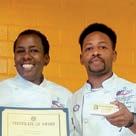

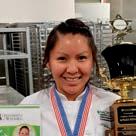

Honorary Fellowship in the Academy is conferred upon individuals in recognition of their dedication and service to the culinary profession, as well as for their enhancement of the culinary arts through their unique accomplishments.
John Burson
Membre du Conseil Magistral
Chaîne des Rôtisseurs
Toledo, Ohio
Luis Del Cid
Director
Academia Culinaria de Guatemala
Henderson, Nevada
John Johnstone, CMC
Vice President, Food & Beverage
The Broadmoor
Colorado Springs, Colorado
Scott R. Paul
Southeast Regional Sales Manager/Corporate Chef
BelGioioso Cheese Inc.
Indian Trail, North Carolina
Mary Petersen President
Center for the Advancement of Foodservice Education
Annapolis, Maryland
Craig Youdale
Dean
Canadian Food and Wine Institute
Niagara College
Niagara-on-the-Lake, Ontario, Canada
James T. Young, CCC
Executive chef
Retired
West Yarmouth, Massachusetts
The ACF and NCR salute our newest certified chefs. For the full list, visit wearechefs.com
Janette Valdez-Ortiz, CFPC
Rebecca Anne Shields, CSC
Timothy J. Werla, CC
Suzanne E. Barrett, CC, CPC
David Acree, CC
Joseph Wisniewski, CEC, CEPC, CCE
Christopher Allen Tanner, CEC, CCE, AAC
Julian Rayshawn Lee Hazen, CFC
Lydia LeMasters, CEC, CCA
Brandon A. Aho, CEC, CCA
Allen Childs, CSC
Kassandra Savage, CSC
Joshua Morris, CFC
Jennifer Ferris, CC
Adam F. Hagar, CEC, CWPC
2019 CHAIR’S MEDAL
LINDA S. MUSCH, CCE, AAC
2019 LAWRENCE A. CONTI, CEC, AAC, HOF, CHAIR'S ACHIEVEMENT AWARD
WILLIAM J. TILLINGHAST, MBA, CEC, AAC
2019 JOSEPH AMENDOLA AWARD
GARRY W. WALDIE, CEC, CEPC, CCE, AAC
2019 LT. GENERAL JOHN D. MCLAUGHLIN AWARD
JEFFREY P. LEIN
2019 CHEF GOOD TASTE AWARD
DEBORAH A. BANDO-DUIT, CEC, AAC
2019 SHARING CULINARY TRADITIONS AWARD RECIPIENT
COSTA N. MAGOULAS, CEC, CCE, CCA, AAC
As of press time the American Academy of Chefs election for Vice Chair is not finalized. We had a great voter turnout with nearly 60% of voter ballots returned. According to AAC Policy & Procedure we will hold a runoff of the top two vote recipients. Final results of the runoff for AAC Vice Chair are expected on July 19.














When you choose Prosciutto di San Daniele PDO, Grana Padano PDO and Prosciutto di Parma PDO, you show a passion for the Italian way of life that includes incomparably delicious, natural food that’s never mass-produced or processed. Each of these products carry the Protected Designation of Origin seal, the European Union’s guarantee of quality and authenticity, so you know they are from a speci c geographical region in Italy and are created using traditional techniques that have set the standard of culinary excellence for generations.














The content of this promotion campaign represents the views of the author only and is his/her sole responsibility. The European Commission and the Consumers, Health, Agriculture and Food Executive Agency (CHAFEA) do not accept any responsibility for any use that may be made of the information it contains.

























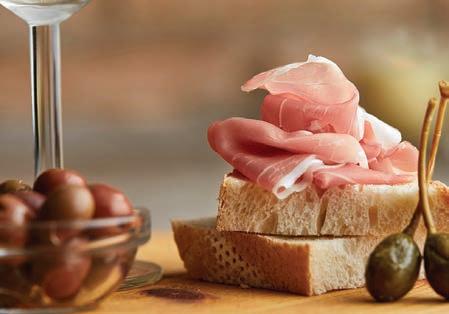
















We’ve been doing a lot of talking about issues affecting our industry lately. This month, we thought we’d take a break and look at some of the best things about being a chef — after all, we advocate on the behalf of chefs because we love what we do.
Median Hourly Wage for Chefs and Head Cooks: $23.30
For all occupations: $18.58
Annual Mean Wage for Chefs and Head Cooks: $52,160
For all occupations: $51,960
Source: Bureau of Labor Statistics National Occupational Employment and Wage Estimates United States, May 2018
Cooking for others is nurturing. It fulfills a survival need, and so our feeling of fulfillment comes not only from the good of the act of giving, but also the fact that we have “helped” in some very primal way.
Source: “The Very Real Psychological Benefits Of Cooking For Other People” by Julie R. Thomson (HuffPost, October 2017)
Source: “Cooking for Cognition: Making a Meal Is Good for Your Brain” (healthybrains.org, November 2017)
—Jesse Schenker, chef-owner of Recette and the Gander in New York City, as quoted in the article “12 Reasons Why Being a Chef Is Way Harder Than You Think” (Thrillist, 2015)
67%
of employees who have access to free food at work say they are “extremely” or “very” happy with their jobs
Source: 2015 survey by grocery-delivery service Peapod
10%
Projected employment growth of chefs and head cooks from 2016 to 2026 — faster than the average for all occupations
Source: Bureau of Labor Statistics, Chefs and Head Cooks
"[Cooking] stimulat[es] your brain with the type of workout it needs to remain healthy..."
Chefs are making more money. Cheffing makes you smarter.
The coolest part of being a chef is the rush of being in the kitchen and seeing my team put out great food, having an idea become a reality on the plate and seeing the smiles on the guests face when they eat my food.

















When you choose Prosciutto di San Daniele PDO, Grana Padano PDO and Prosciutto di Parma PDO, you show a passion for the Italian way of life that includes incomparably delicious, natural food that’s never mass-produced or processed. Each of these products carry the Protected Designation of Origin seal, the European Union’s guarantee of quality and authenticity, so you know they are from a speci c geographical region in Italy and are created using traditional techniques that have set the standard of culinary excellence for generations.





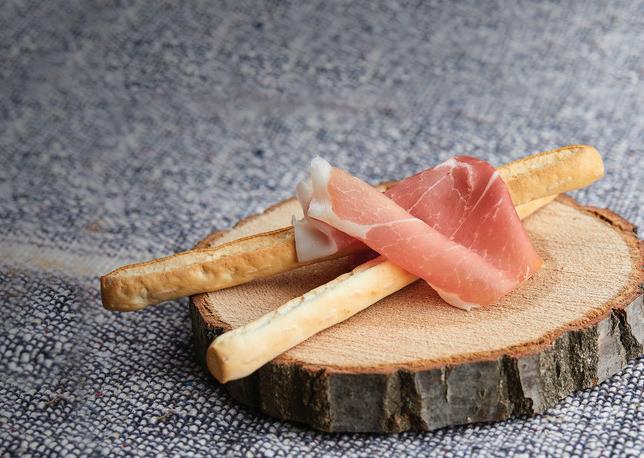
The content of this promotion campaign represents the views of the author only and is his/her sole responsibility. The European Commission and the Consumers, Health, Agriculture and Food Executive Agency (CHAFEA) do not accept any responsibility for any use that may be made of the information it contains.



















































 CAMPAIGN FINANCED WITH AID FROM THE EUROPEAN UNION.
THE EUROPEAN UNION SUPPORTS CAMPAIGNS THAT PROMOTE HIGH QUALITY AGRICULTURAL PRODUCTS.
CAMPAIGN FINANCED WITH AID FROM THE EUROPEAN UNION.
THE EUROPEAN UNION SUPPORTS CAMPAIGNS THAT PROMOTE HIGH QUALITY AGRICULTURAL PRODUCTS.
Although Orlando, Florida has been a popular winter resort destination for 100 years, it was the opening of Walt Disney World in 1971 that brought Orlando to the world’s attention and that of the nation’s chefs. Known as the "Theme Park Capital of the World,” today over 72 million visitors come annually to the area. (Including the thousands of chefs coming for ACF National Convention, August 4-8, 2019. Registration is still open!)
Before the impact of Walt Disney World, Orlando primarily offered visitors an assortment of regional dishes. But thanks to the direct influence of Walt Disney himself, who deeply believed that various ethnic dishes offered American
diners a chance to better understand the world, Orlando is now host to an amazing range of dining experiences, including three unique restaurants worthy of note.
Among Orlando’s many leading restaurant chefs is Scott Hunnel, whose stated goal of “repeat excellence” now includes overseeing all the food production at Disney’s prestigious Grand Floridian Resort and Spa, including highend Victoria and Albert’s.
“Meals here are an event, whether served in the elegant dining room or
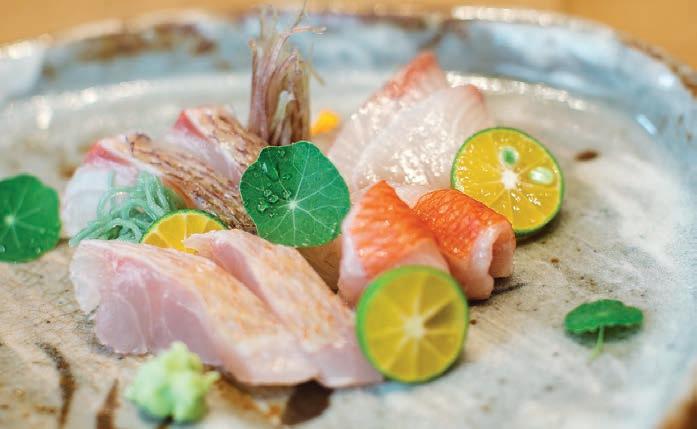
Above
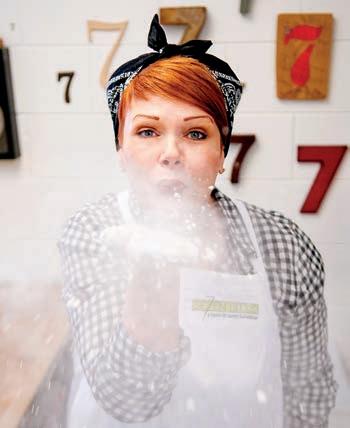
[at] the Chef's Table,” according to USA Today’s 10Best. Seasonal, avant-garde prix fixe meals here “can only be described as a top-of-the-line culinary experience.”
A frequent James Beard finalist and an active ACF member, Hunnel’s skill has helped to define not only the awardwinning style of the Grand Floridian Resort and Spa, but also influenced the cuisine of the entire region.
As executive chef, Hunnel oversees all culinary operations at the resort including 11 foodservice locations. "The Grand Floridian Resort and Spa is a Disney flagship property. Only excellence is acceptable here,” he says. “And our team delivers that expected guest experience day after day.”
Another restaurant that offers visiting chefs an entirely different but equally memorable dining experience is Kadence. Selected by the Orlando Sentinel Newspaper as the best restaurant of 2019, this nineseat sushi bar specializes in a multi-course, pre-set tasting menu. Located in the Audubon Park Garden District inside a black building that looks more like a modern art museum than a cutting edge restaurant, the restaurant’s sushi is considered by both critics and diners to be some of the best in the American southeast.
“Kadence is about rhythm, precision, creativity — and most of all conviviality and being fully present in each moment with our guests. The food is traditional yet layered with our travels and training — and it’s fun,” Kadence’s three talented young chef-owners, Lordfer Lalicon, Jennifer Banagale and Mark V. Berdin said in a statement to NCR. “We are excited to be in Orlando helping to push the growing food movement in our home state.”
Berdin believes the restaurant is a
mirror of the Kadence team’s mutual evolution together as a team. Their cohesive creativity often results in astounding seafood dishes which demonstrate a global awareness of ingredients. Fresh fish from Japan are flown in several times a week as well as orange clams from Washington State and finger limes from California to name just a few of the ingredients that these chefs transform daily into dishes that are as savory as they are beautifully unique.
If, however, while in town, chefs wish to experience a more casual,
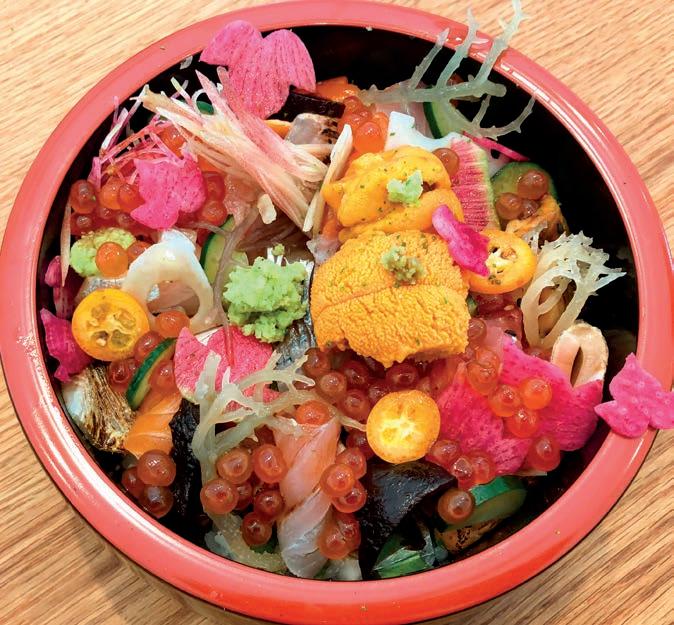
regional menu, Se7en Bites is a great choice as many devoted locals will tell you. It’s the “perfect way to start your day filled with traditional Southern breakfast dishes with a modern twist,” according to Chef Trina Gregory-Propst.
Gregory-Propst, the pastry chef and owner of Se7en Bites, always had a way with things sweet. Even her 21 years in
the spa industry did not erase the lesson she learned in early childhood from her grandmother that food was a joy made to be shared.
However, after many years there came a day when baking just for her family and friends was not enough. GregoryPropst decided to finally follow her heart and change careers. She enrolled in the culinary program offered by Valencia College in Orlando, and completed three Bachelors degrees in the Culinary Arts, Baking and Pastry Management, and Restaurant Management.
After graduation, she searched and finally located a small building in the Milk District of Orlando, and in 2013 Se7en Bites opened. Would anyone come? Maybe her dream was just a fantasy, an expensive personal illusion wrapped in flour and sugar.


Her fears soon dissolved because the hoped-for customers came. They came in droves and lined up around the block for her light-as-air biscuits, chicken pot pies, savory bread puddings and other memorable “fresh baked goods made from family recipes” that are sure to touch the heart as well as satisfy the palate.
In 2016, along with her wife Va Propst, Gregory-Propst opened a larger Se7en Bites. It has the same bustle, addictive baked goods, and warm welcoming atmosphere as the original bakeshop. In March, the pair opened Sette, an Italian spot in the Ivanhoe Village area offering made-from-scratch vegan pastas, hearty risottos and, of course, desserts.
With such a great up-and-coming food scene, Orlando is an ideal location for ACF chefs to visit this summer. Whether attending a committee planning session or the national Convention, these and many other outstanding local spots offer chefs a chance to both relax and savor world class cuisine in a unique culinary destination.
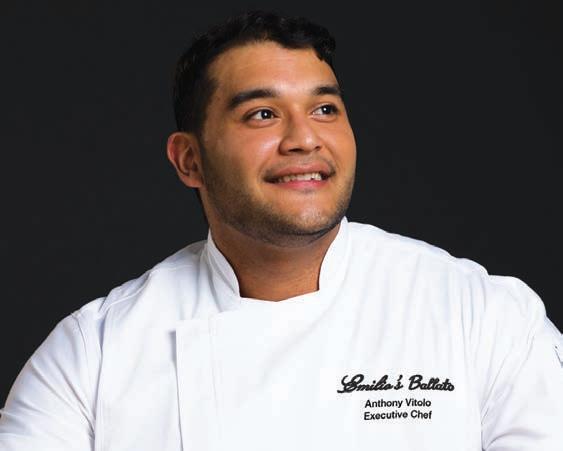
As a noted culinary historian, Ana Kinkaid writes regularly for the ACF website, We Are Chefs, and speaks at ACF events as well as the Culinary Institute of America and Women Chefs and Restaurateurs conferences.

~All Natural~ NO ARTIFICIAL INGREDIENTS. MINIMALLY PROCESSED. EVER





























Boar’s Head ® Simplicity® offers extraordinary flavors handcra ed from simple ingredients. at means minimally processed, hand-trimmed whole-muscle meats with no artificial ingredients, no preservatives, and no antibiotics ever.
















REAL INGREDIENTS. REAL FOOD. REAL SIMPLE.®

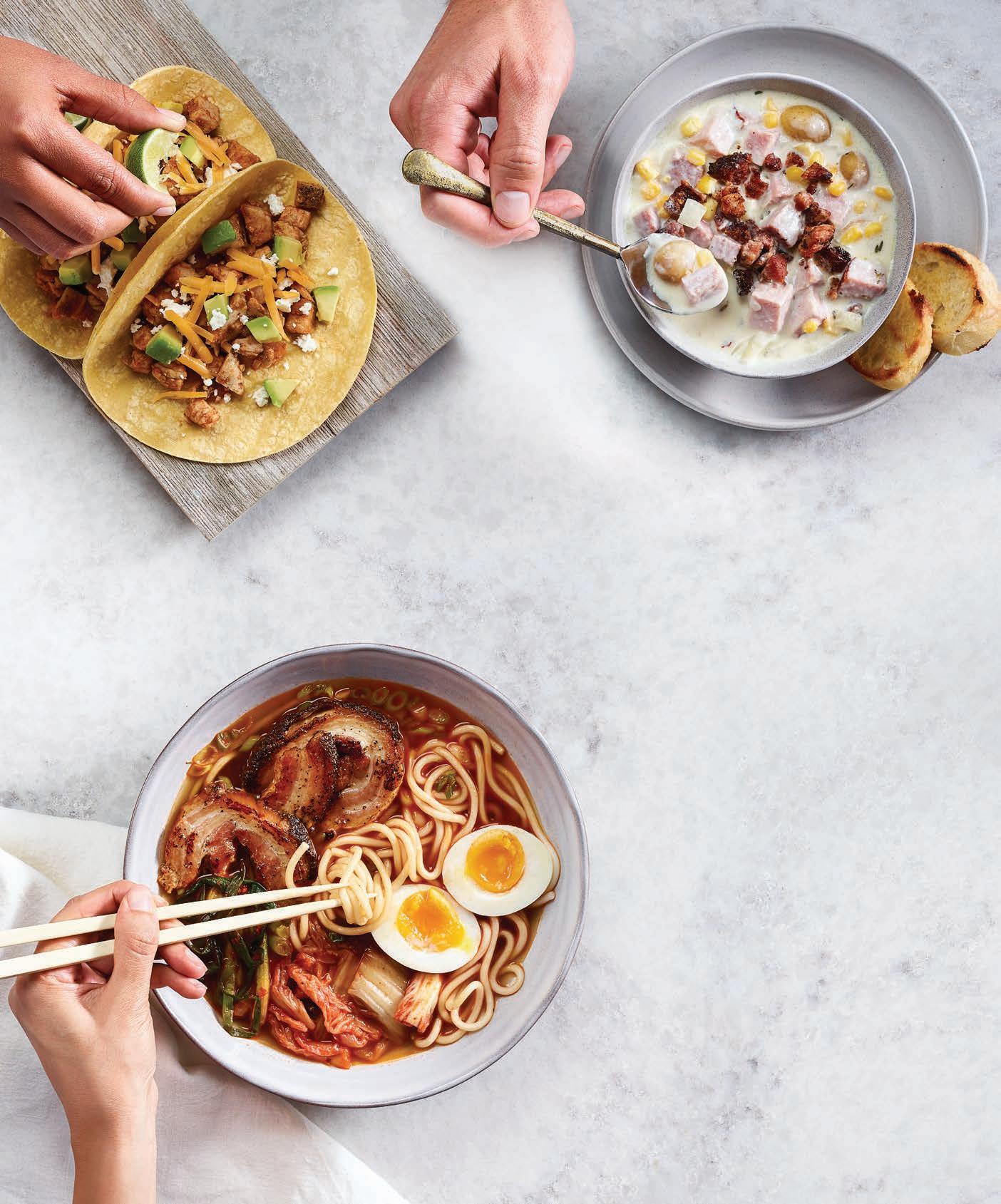
Open a world of creativity across your menu. 1-800-352-6277 | boarsheadfoodservice.com
NO ANTIBIOTICS

In the world of viennoiserie (the overall category of laminated pastry, including croissants and Danish pastries), precision is key. Mixing the dough for sufficient — but not excessive — gluten development and temperature control during lamination and before baking all matter. But beyond the basics, there is always room for innovation. By adding colorful layers with food coloring pastes or natural vegetable powders, trendy flavor combinations in fillings, and focusing on the visuals with new shapes and finishes, pastry chefs and bakers on the leading edge are re-inventing this often-challenging category.
“Some bakers are focusing intensely on this category, dedicating their time and energies to tasting and development of formulas that will work, from the artisanal to the high-volume level of production,” says Ciril Hitz, senior instructor at the International Baking & Pastry Institute at Johnson and Wales, Providence, Rhode Island. “You truly need to understand what’s happening on the scientific level exploring what the proper dough structure should be before laminating it with fat.”
On retaining craftsmanship in baking, Hitz notes: “Not everything has to be mechanized. We need to feed and stimulate our senses continuously to advance the art forward.”
No one currently does that more than Peter Yuen, a skilled craftsman and innovator who preaches the gospel of viennoiserie and highly evolved lamination to bakers around the world. In his work, Yuen has developed a concept that he calls “The Story of Two Ingredients,” in which, among other discussions of the importance of knowing the key roles of flour and butter, he lays out a system of numbering layers. This mathematical approach allows the bakery to calculate from the desired thickness per layer the thickness of the final laminated dough.
“One can achieve a desired result only if you know the thickness per layer which is multiplied by number of layers produced in the folding and rolling process.” He has observed that when the layers are too thin, they flake off into bits and pieces and make eating neatly difficult to do. Slightly thicker layers are still very visible with a more irregular open crumb, a desirable trait of a well-made croissant in his opinion.
Yuen has also notes that, as the surface area of the butter covering the dough increases, correspondingly, the number of layers that can be produced when first folding the dough over the fat also may be Opposite: A croissant at La Centrale Miami.
The old rules of laminated pastry are being re-examined by modern bakers
increased, resulting in more layers initially which are increased exponentially as the dough is rolled, folded and rolled again.
In addition to studying the layering process, Yuen has introduced the use of patterns and color into his laminated dough products, further enhanced by intricately cut and braided or twisted shapes. His visually pleasing wood-grained patterned viennoiserie — achieved with special hand tools of his own devising — has been a hallmark of his baking.
As an art school grad, Hitz makes an apt observation on the creative shapes in viennoiserie: “Using origami and napkinfolding techniques can lead to some interesting new shapes for these products. But ultimately the numbers you generate through careful folding enabled by proper chilling and resting of the dough is more important than surface glitz.” It seems that customers like flakiness and appreciate the beauty of layers.
“Viennoiserie is really a domain where creativity has no limit. It’s important to reinvent the classics,” says French-born Nicolas Botomisy, a pastry chef/consultant based in New York. Like others leading the field, he avoids the use of artificial colors in his dough.

“I love colorful baked goods but use only natural coloring. Flavor and color go hand in hand, so I insist that the taste that a color might impart to the dough must be considered,” he says. “I prefer something that is flavorful, and much of that flavor comes from the quality of the butter which is roughly 25 percent of total dough weight.” He prefers butter with 83 or 84 percent butterfat — the higher the butterfat, the lower the water content in the dough. Using higher butterfat-content butter also leads to more flavor and superior texture in the finished product.
On creating a colorful outer layer (usually 10 to 15 percent of the original laminated dough weight), most experts agree that it’s best to choose a more enriched dough such as brioche. It yields a softer texture for the outer crust, which is less likely to break off after baking or during selling.
“With the advent of social media flooding the food scene, to please a foodie-focused public, chefs are forced to flex their creative muscle and create new flavors, shapes and looks,” says Kalen Hendrick, head baker at La Centrale, a year-old food hall in Miami, FL. “Undoubtedly customers are drawn to visually appealing products.”
As a result, chefs must keep up to date on trends and techniques, expanding their knowledge. “To stay out in front of the trend, chefs are experimenting with new fillings ... from banoffee to apple pie on the sweet side to eggplant and hummus on the savory,” Hendrick says. On the nuts and bolts of the lamination scene, he continues: “I think the right shaped molds are key. Creating unique pastries using silicone forms from the Fleximolds and Exoglass lines are taking a versatile item to the next level. Square forms give a unique neat look to laminated products.”
Thanks to the pioneers in the world of laminated products, everything old is new again, energized by pastry chefs who are restless and just iconoclastic enough to question previously held eternal verities. As in all culinary endeavors, knowing the past leads to future innovation.
Contrary to the typical restaurant experience in the Western world, serving desserts is not an expectation in Japan. National Culinary Review talked with Mori Onodera, executive chef at Inn Ann, located within Japan House, Los Angeles, about the trend towards offering more sweets.


ONODERA: Western diners have an expectation of seeing a dessert menu and having the option to order something — or not. Japanese restaurants have recognized the demand and now offer some kind of dessert, whether it’s a traditional Japanese piece of fruit, a modern scoop of ice cream or something with chocolate.
ONODERA: Traditional Japanese desserts tend to be subtle, lighter in texture and color, smaller in size and not overly sweet. Red bean paste, mochi [rice paste] and fruit fillings are a few traditional ingredients, but modern desserts include sweet potato, jellies, chocolate and other ingredients.
ONODERA: Just like any good dessert, sometimes good things take time. Japanese desserts can range from complex to simple. For example, seasonal fruits are considered a dessert in Japan and
preparing cut fruit is rather simple. Making ice cream with seasonal fruits can be easy to do, too, but both still reflect Japanese dessert sensibilities.
A dessert I prepare is Sansho Spice Sorbet. It’s a complex, multi-flavored dessert that takes time to make, but it is relatively simple and straightforward to prepare. The sorbet is flavored with steeped Japanese sansho peppercorns and yuzu juice, which are added to a sorbet base and poured into an ice cream maker. Diving into this unusual, yet crowdpleasing dessert, the first taste is citrus from the yuzu, with a tingly kick from the peppercorns on the tail end. The dessert is Japanese traditional, but the flavor profile satisfies the Western craving for on-trend global flavors.
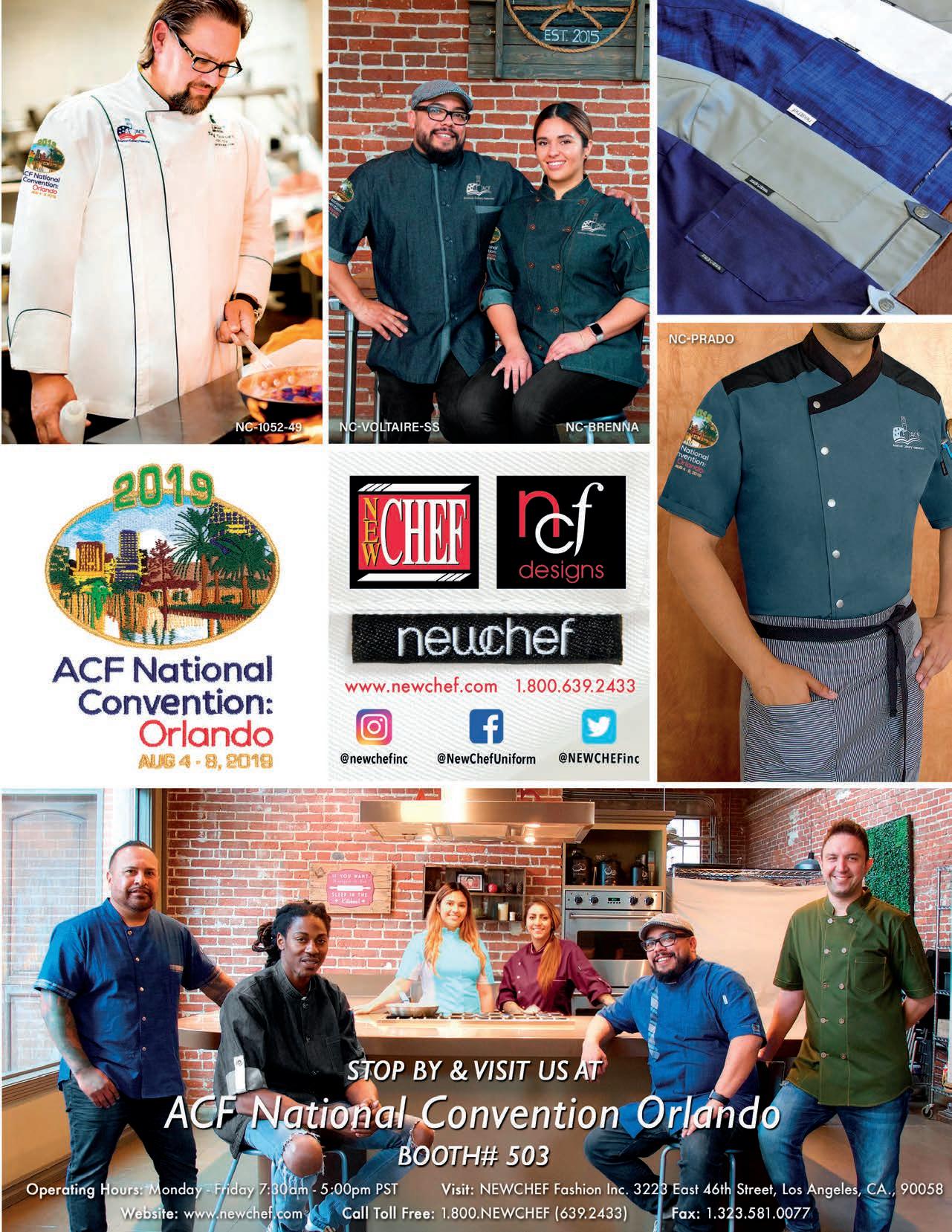

Low- and no-alcohol drinks are making waves at the bar — and for good reason. One-third of all Americans haven’t imbibed at all over the past year. And a hefty percentage who do drink are trying to cut back on alcohol.
“When the craft cocktail movement was in its infancy, bartenders were mixing heavier drinks — things like Manhattans and Vikings. Now, there’s a proliferation of lighter-side drinks and highball cocktails,” says Jack McGarry, managing partner of Dead Rabbit in New York.
Even drinks that don’t require mixing, such as cider, beer with less than 1.2 percent alcohol and alcohol-free wine are infiltrating the bar at a fast clip. According to an analysis by Kantar Worldpanel, sales of cider and beer with less than 1.2 percent alcohol spiked by 30 percent and interest in no- and low-alcohol wine increased by 8 percent.
While health-conscious millennials may be driving the trend, chic moms-to-be, professionals who need to maintain their A-game and people who want to have a good time without the next-day headache are also seeking low and no-alcohol options at the bar. And innovative bartenders are not only poised to meet the demand, they’re discovering that lightening up has its perks.
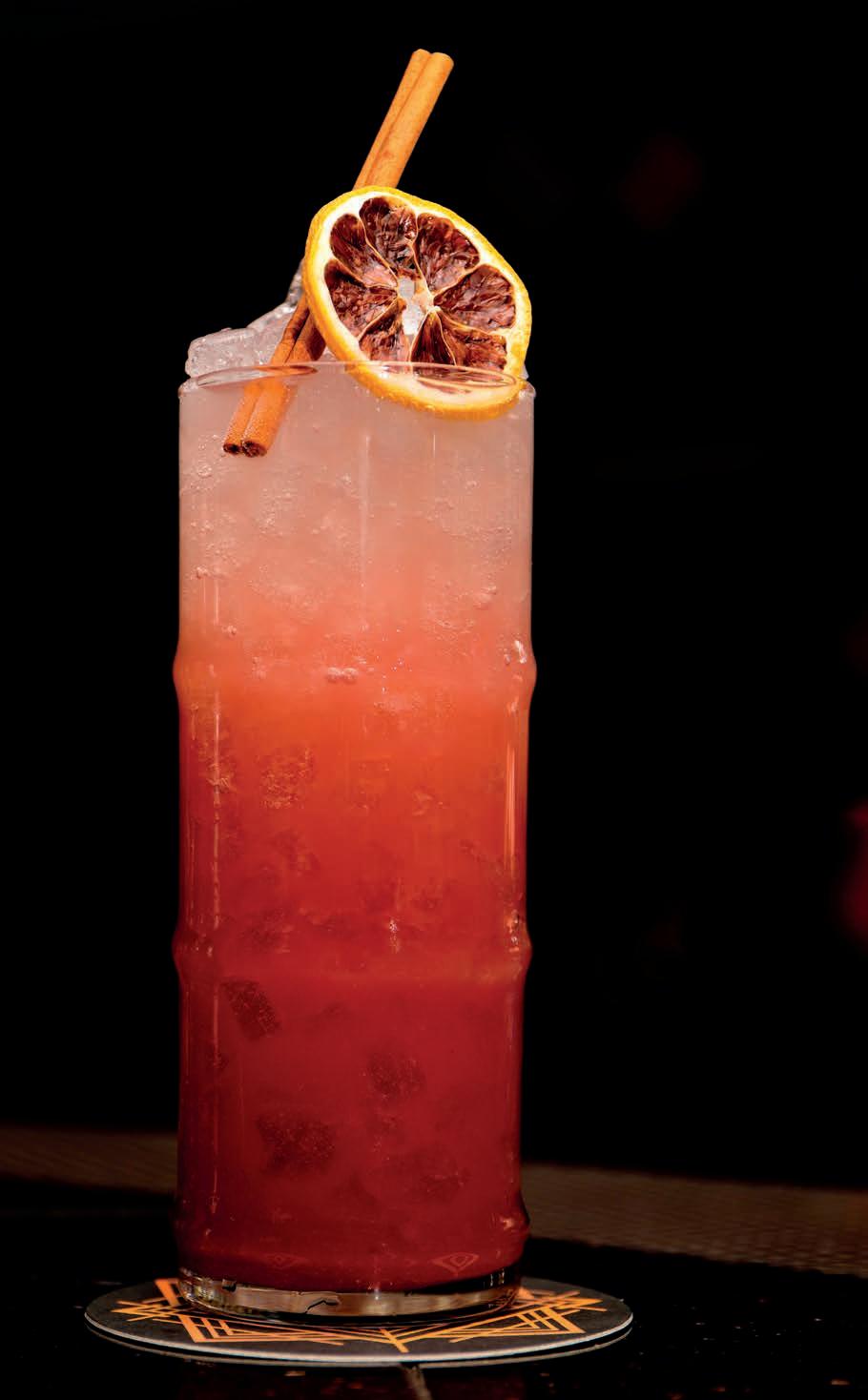
Historically, booze-free options at the bar were limited to soda, ginger beer and syrupy concoctions crafted for kids (hello, Shirley Temple!). In recent years, though, choices for a sophisticated alcohol-free fix have exploded.
For a long time, people called nonalcoholic drinks “mocktails.” The more apropos monikers: “spirit-free,” “zero proof” or “no alcohol drinks.” After all, there’s nothing fake or juvenile about these cocktails.
With more ingredients at their disposal than ever before, savvy mixologists are honing their skills, breaking out bitters and cultivating creativity in the glass. Some are even introducing a “temperance pairing” for diners who want to indulge in a 10-course tasting menu without the heady buzz that accompanies it.
“We’re seeking balance in every part of our lives. That’s where a low-alcohol cocktail or spirit-free cocktail makes sense,” says Natalie Bovis, owner of The Liquid Muse and Partner of OM Liqueurs. Low- and no-alcohol cocktails not only allow patrons to drink more without getting drunk, they’re often better pairings with food.
The best drinks represent the bar’s concept while also pushing the envelope in the glass. At The Reading Room in Washington DC, for example, Head Bartender Chantal Tseng finds inspiration for her spirit-free options between the pages of her favorite books. A couple of standouts:
From Umberto Eco’s “The Island of the Day Before”: “Love obeys the same laws as the wind, and the winds are always influenced by the places from which they come…” The drink: Hibiscus tea, pineapple, coconut, honey, lime, ginger, pinch of hibiscus salt, mint and crushed ice.
And from N.K. Jemisin’s “The Obelisk Gate”: “He turns the cup of safe in his hands. The cloudy solution has remained white as it should, but he hasn't taken a single sip.” The drink: Macadamia nut milk, honey, egg white, fresh lemon, orange flower water and a splash of soda.
Mixing spirit-free drinks begins with a focus on flavors that excite you and are easy to work with.
Once you nail down the flavor profile you’re after, mixing a spirit-free cocktail isn’t unlike making a chocolate chip cookie, says Bovis. “It boils down to balance,” she says. If you put too much sugar in a chocolate chip cookie recipe, it isn’t going to taste right. The same rule applies to drinks.
Both Bovis and McGarry agree the biggest challenge is finding a suitable substitute for the booze. Unfortunately, when mixing spirit-free beverages, bartenders often remove the spirit
and double up on sugar and citrus. “That strategy doesn’t work,” says McGarry. “Even if you spread it with carbonation, it’s an intensely sweet drink.”
Good booze-free stand-ins include ginger ale, light fresh juices such as grapefruit, unfermented grape juice, watermelon and tea. Still stumped? Plug a low- or no-alcohol distilled spirit into your favorite cocktail recipe. Booze-free Seedlip is a classic example. Available in three flavors — Garden 108 (herbs and peas), Spice 94 (cardamom and allspice) and Grove 108 (citrus) — Seedlip is unsweetened and calorie-free.
“A no-alcohol distilled spirit like Seedlip adds that spirit component and then you can keep the citrus and sugar at the same level. The overall structure of the drink still mimics a traditional cocktail,” says McGarry.
While bar-goers used to assess the value of a drink based on how much alcohol it contains — and how quickly it can give you a buzz — today’s drinkers value the experience of enjoying a well-made drink more than the booze. That shift in mindset pays off for bartenders, too.
“Put a delicious combo of nonalcoholic ingredients in a fancy glass with a pretty garnish and you can charge almost as much as a regular cocktail,” says Bovis. “You’ll not only get the benefit of customers who are able to stay out longer — and drink more — you’ll also gain a reputation for your hospitality.”
Amy Paturel, M.S., M.P.H., lives in Murrieta, California, where she writes about food, health and wellness.
According to Natalie Bovis, owner of The Liquid Muse and Partner of OM Liqueurs, every bar should showcase at least two inspired, spirit-free drinks on their bar menu. A few key flavoring tools:

Syrups: Hibiscus, lavender and other floral waters act as unique flavoring agents for myriad cocktails.
Low- and no-alcohol spirits: Seedlip is the only no-alcohol distilled spirit readily available, but lowalcohol spirits like OM’s are worth exploring, too.
Bitters: Alcohol-free bitters add flavor to your cocktails without the booze.
Herbs: Savory herbs such as sage, basil, cilantro, rosemary and thyme. Not only do they add flavor to the glass while also serving as an enticing garnish.
Sweeteners: Go beyond simple syrup and play with sweeteners such as maple syrup, honey and jam to add complexity to your glass.
Several theories exist on the origins of fried chicken. A popular one is that it originated with the Scottish, who fried unseasoned chicken parts in fat as far back as the Middle Ages; another points to the West African traditions of frying seasoned, battered chicken in palm oil. Still others trace it to China or the Middle East. The fourth-century Roman cookbook Apicius has a recipe for deep-fried chicken called Pullum Frontonianum
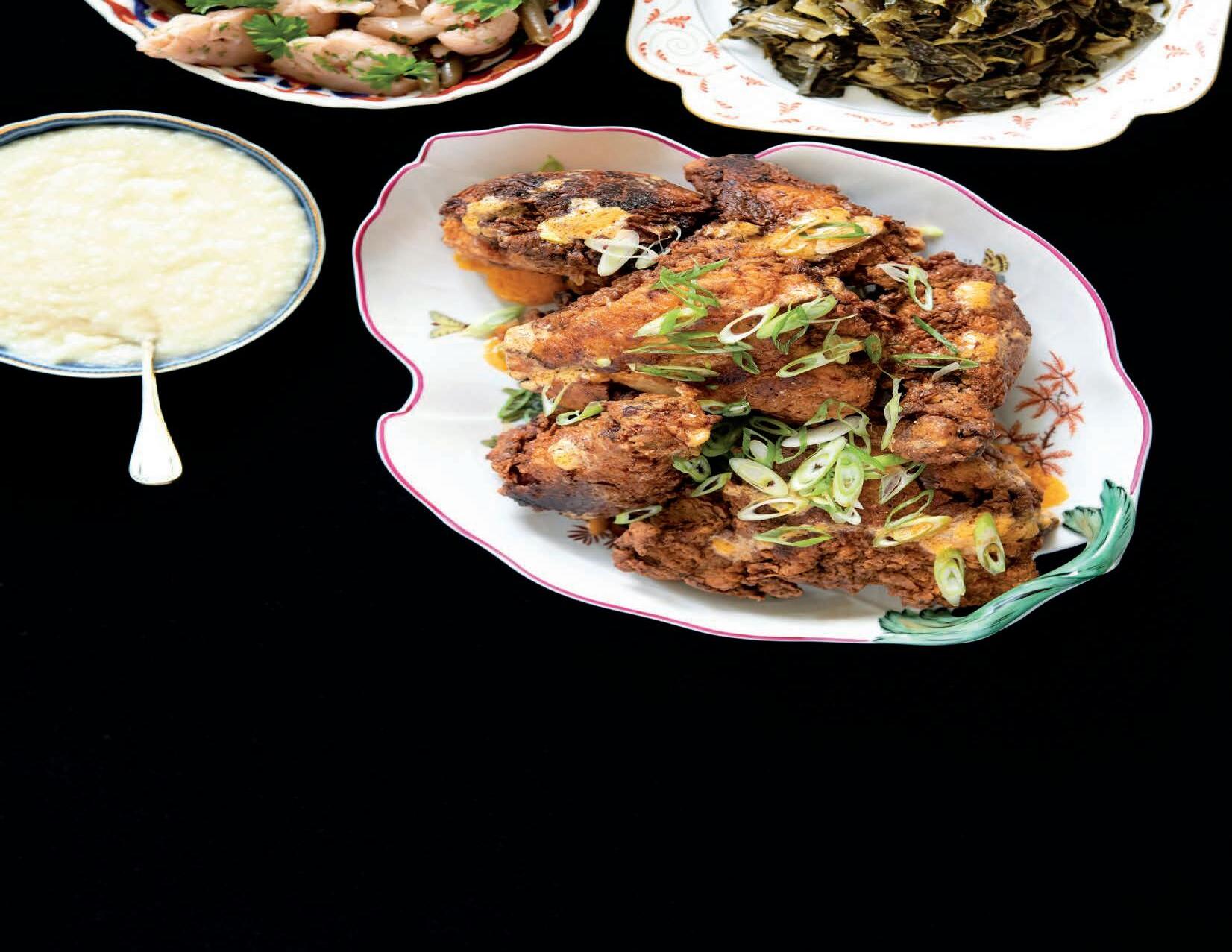
Whoever made it first, it’s undeniable that African-Americans perfected the dish in the American South. The West African slaves brought their seasonings and the Scottish brought their frying method. What resulted is today one of the ultimate American comfort foods.
“Fried chicken is something we do on the regular here at the plantation,” says Gerald Ford, CMC, executive chef of the Ford Plantation in Richmond Hill, Georgia and captain of ACF Culinary Team USA. “It’s very homestyle, very classical. It touches people’s souls a little.”
To create this version, Ford marinated the chicken, breaded it with a seasoned flour and fried it in a cast-iron pan in lard he’d rendered from pig fat. On the side he served collard greens, pickled vegetables and Carolina rice grits (a crop that, in the 1920s, was grown on what are now the grounds of the Ford Plantation). You can’t get much more classical than that.
“[Fried chicken is] a good candidate to be made modern,” Ford says. “We kinda miss that mark as chefs when we transition something that ties into a really great memory from Mom. It can lack that personality.”
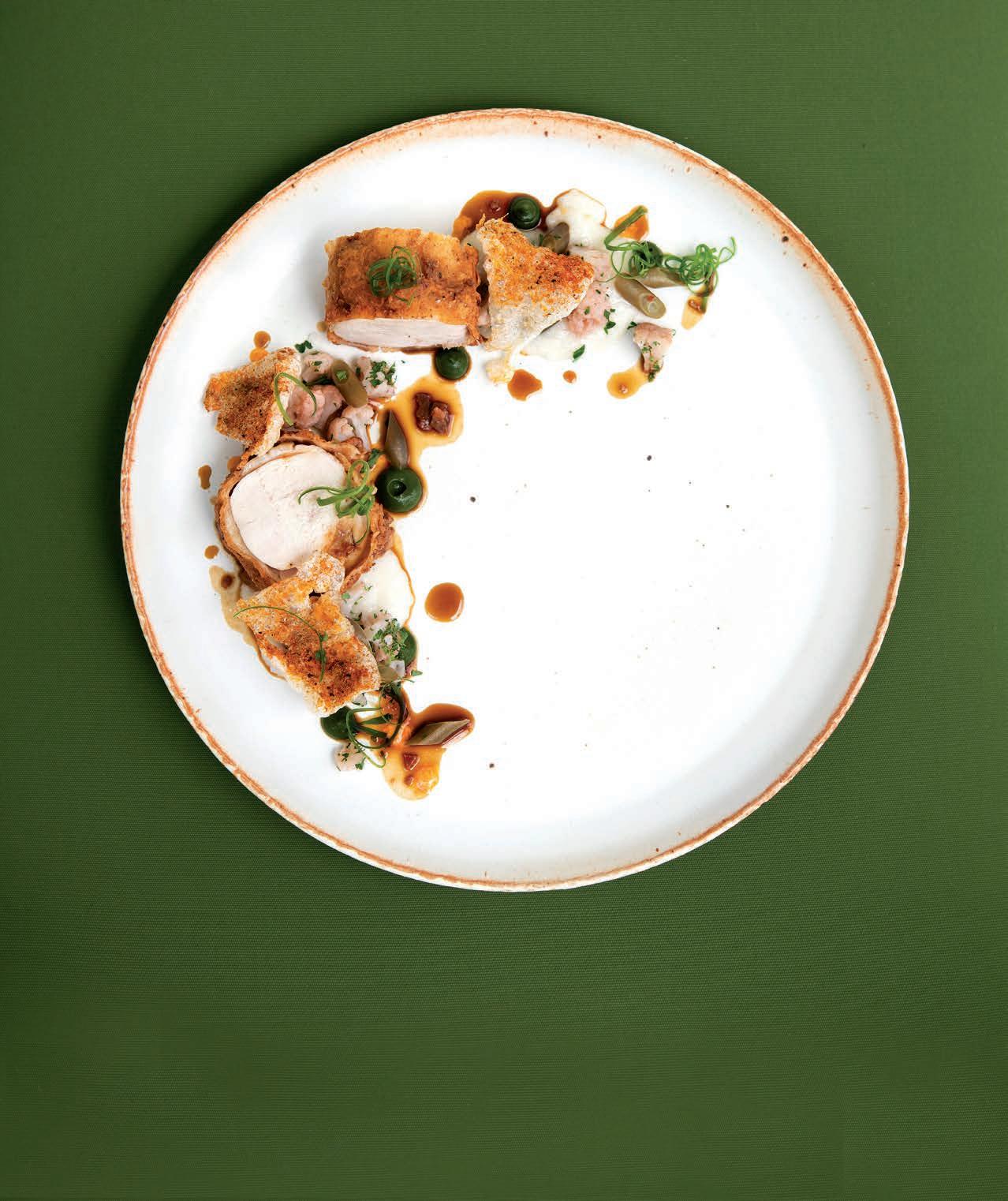
To give the dish the homage it deserves while maintaining its “spirit,” Ford drew inspiration from his surroundings (as generations of Southern cooks have done before him). “It makes the most sense to me to use the closest available local ingredients,” Ford says. “The South, in season, has some amazing produce and products. I wanted to highlight those things.”
He puréed the collard greens in a blender with some chlorophyll. After marinating the chicken, he treated it like a galantine and poached it in a combi oven, then fried it.
“I used the same process of breading and frying that I would have normally done,” he says. “I cut the vegetables a little bit smaller than I normally would. I consider the modern a little more refined — instead of larger pickled vegetables and bigger chunks that require the guest to use a fork and knife, I carved the veggies a little more.”
See the classical and modern recipes, as well as more photos, at wearechefs.com.


Automation in the kitchen is nothing new, but the next generation of culinary robots eclipses the tomato corers and stand mixers of the past. Should chefs be concerned?
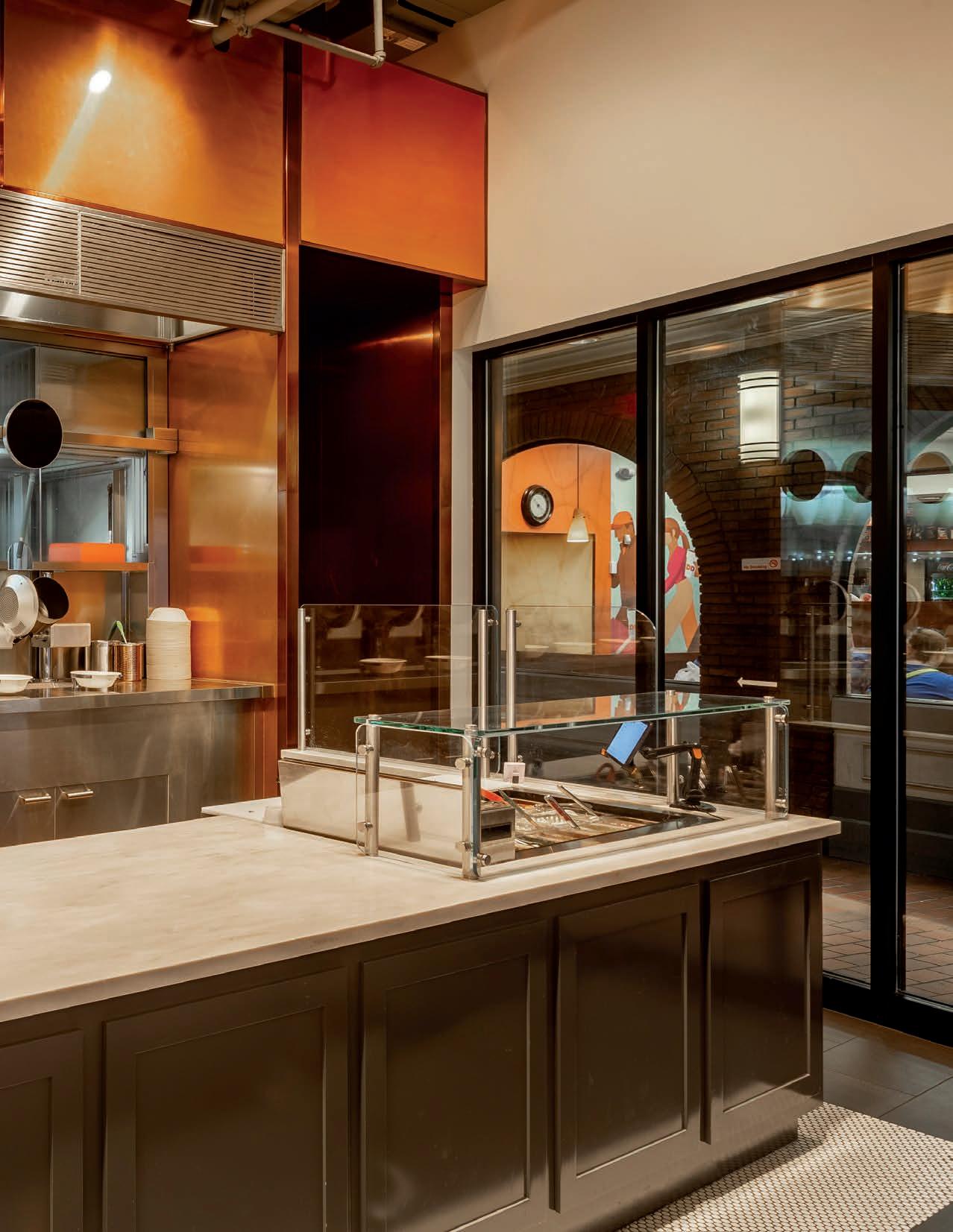 By Jody Shee
By Jody Shee
Someday guests may ask why they can only get restaurant food when the restaurant is open, why they can only get it on premises and why it takes so long to prepare. The old operational paradigm is set for a makeover, and it’s already happening — thanks to smart automated equipment. Consider the expanding group of Hammond, Louisiana-based The Salad Station restaurants with an expected 30 company and franchised units operating by the end of 2019. Scott Henderson, president and founder of the pay-by-thepound self-service salad and food bar concept had his eye on Sally the robot from Redwood City, California-based Chowbotics for some time. “I was trying to figure out if this was competition or just technology or something to adapt as the newest greatest way of doing things,” he says.
Chowbotics is a food robotics company with more than 50 vendingmachine-looking, salad-making robots called Sally already in the marketplace. Now Henderson owns one of them,
which he placed at nearby North Oaks Hospital in Hammond in March 2019. The refrigerated, automated machine holds 22 canisters of salad ingredients — lettuce, toppings, proteins and salad dressing. His staff fills the canisters with ingredients at the nearby restaurant and transports them to the machine at the hospital. From a built-in touchpad, guests choose the ingredients they want, or select from a small list of suggested salads. With a push of the button, the canister housing spins and drops a helping of each selected ingredient into a 32-ounce pulp container.
Henderson’s eyes have been opened to the new ability the robot gives him to extend the The Salad Station brand to nontraditional locations (the unit displays the restaurant logo). “It allows hospital night shifts to get an express
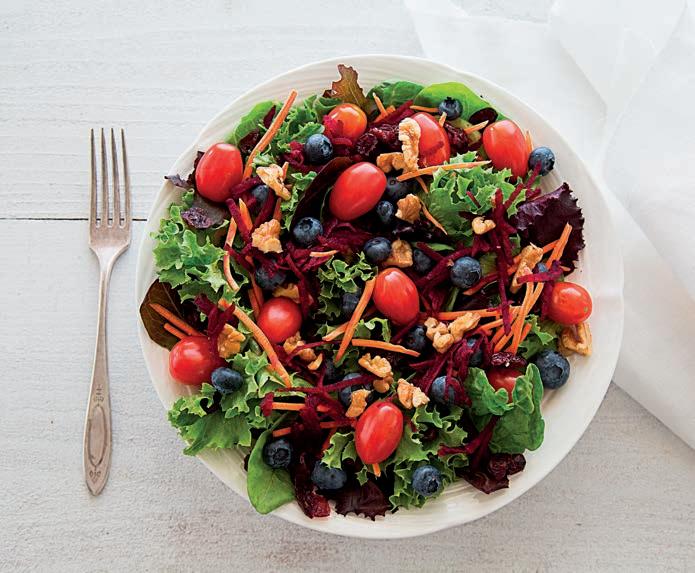
“I WAS TRYING TO FIGURE OUT IF THIS WAS COMPETITION OR JUST TECHNOLOGY OR SOMETHING TO ADAPT AS THE NEWEST GREATEST WAY OF DOING THINGS.”
salad rather than a candy bar from a vending machine,” he says.
Since launching the salad robot at the hospital, Henderson has realized an average of $300 a day in extra income, bringing revenues for his quick-service operation more in line with fine-dining restaurants, he says. His sights are set on purchasing more of the robots to place at other hospitals and at a local university. He believes the opportunity for his franchisees to purchase and place robot salad machines at satellite locations is a revenue-building bonus for them.
Chowbotics’ Sally robot is just one example of automation that could quickly become commonplace, especially as minimum wages increase and foodprepping labor is harder to find.
Michelin-starred Daniel Boulud, who lends his expertise as culinary director (and personal investor) for Spyce in Boston, a fast-casual single unit with the tagline “culinary excellence elevated by technology.” The restaurant, which opened in May 2018, was founded by four MIT students who came up with a line of seven automated woks to cook internationally themed bowl meals in front of guests using induction heating. Using a touchpad menu, guests select a bowl meal, (among the choices are a Korean dish of roasted chicken, sautéed kale and brown rice in a bulgogi marinade, soy sauce braised beans, kimchi, scallions, gochujang mayo and sesame seeds; and a Lebanese mix featuring roasted chicken, lentils, white mushrooms, cherry and sun-dried tomatoes, fresh dill, tahini, feta and
Miso Robotics, Pasadena, California, developed Flippy Kitchen Assistant, a burger-flipping robot that can learn from its surroundings and acquire new skills over time, according to the company website. It can work the fryer or the grill using sensors to time its movements.
CaliBurger in Pasadena is championing the technology in its kitchen.
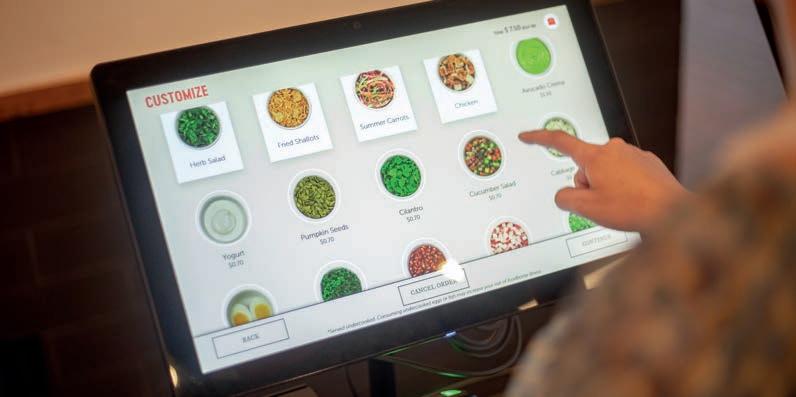
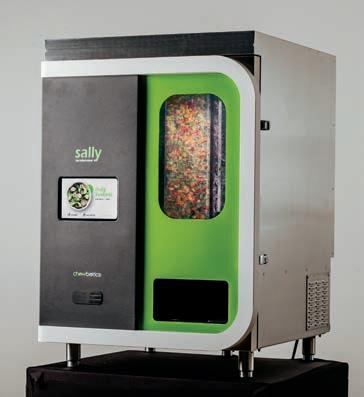
Industry elites have their eye on kitchen automation, including
cucumber salad). The customer’s name displays above the wok that begins working on their meal. An automated runner behind the woks grabs the ingredients, which go in the heated wok before tumbling for two and a half minutes. When it’s done, a bowl swings into place and the ingredients drop into it. Servers finish off the bowls with additional fresh ingredients they see on a screen for that order.
Since the restaurant has only been open for just over a year, expansion predictions are difficult, given that the four founders have a tech, rather than a restaurant, background. “We have had a lot of inbound interest, but for us, we’re firmly dedicated to building a stable and strong restaurant company,” says COO Kale Rogers. However, he notes there could be as many as three Spyce restaurants open by the end of 2019 and up to six by the end of 2020.
Automation is hardly new to the restaurant industry, considering that the KitchenAid stand mixer entered the market 100 years ago this year. Prior to that, dough was mixed by hand. “We will always find ways to create innovations that help us be better at what we do, creating and serving food and beverage to the world,” says Alex Susskind, associate dean for academic affairs and professor of food and beverage management for Cornell School of
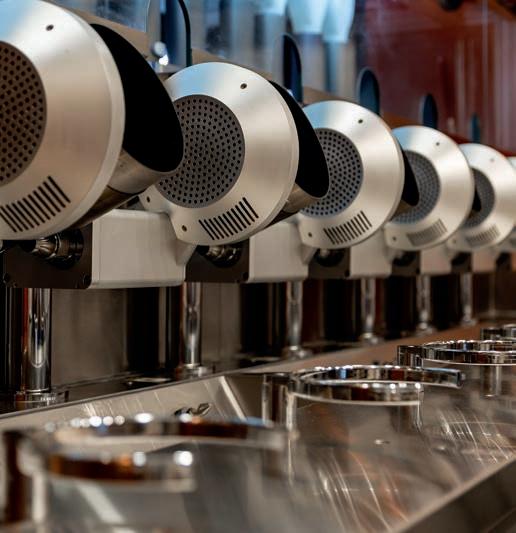
Hotel Administration in the SC Johnson College of Business, Ithaca, New York.
As an example, he points out McDonald’s French fries. “The fryer automatically goes down, cooks the fries for a determined amount of time at the correct temperature, and when they are done, the fryer comes up. That’s a robot,” he says.
With his Sally robot experience, Henderson believes the industry is only scratching the surface of what’s possible. “In 10 years, many things will be automated and practical,” he says. “In five years, major chains will have automation figured out more than they do now, and we will see that much more being used.”
Spyce, with its automated woks, is already experimenting with other automated cooking methods, Rogers says — though he can’t elaborate yet.
Chowbotics’ Sally is expanding beyond salads. The company introduced açai bowl capabilities at the National Restaurant Association Restaurant, HotelMotel show in Chicago in May. Grain and breakfast bowls are a step away.
The cost to automate is within reason. The Sally robot costs $30,000 to purchase outright or can be financed for $640 a month over five years, says Chowbotics’ CEO Deepak Sekar.
The benefits of automation may outweigh the cost, especially as automation combined with smart capabilities improves over time. “Right now, self-driving cars don’t work perfectly,” Susskind says. “But 30 years from now we’ll look back and laugh and say, ‘Remember when self-driving cars used to hit trees?’” Likewise, the foodservice industry will find ways to make automation work on a wide-scale basis.
With reduced labor involved, automation can allow for reduced meal costs. Sekar points out that those operating the Sally robot are selling the salads for less than a packaged salad mix
at the grocery store. With no packaging, distributor or cross-country shipping expenses to recoup, the salads are cheaper and fresher, he says. At North Oaks Hospital, the robot-prepared salads cost $7 plus tax. At Spyce, customers pay only $7.50 for their robot-prepared bowl meals.

A self-contained food-prepping robot is also a game changer when it comes to space savings and food safety.
The San Antonio, Texas, headquarters of Sodexo-managed USAA, has placed Sally salad robots in three of its corporate dining outlets, allowing the overnight shift to purchase a fresh meal when the cafeteria is closed, says Mark Spinelli, Sodexo’s vice president of operations for USAA business. In a three-foot-by-threefoot footprint, the machine provides fresh items when a traditional salad bar doesn’t make sense for the amount of space and required labor to run it.
“There’s a lot less waste than a traditional salad bar because the ingredients are kept temperature controlled,” he says. Employees load the machine with ingredients on Friday
night, which services the machines all the way through the weekend without labor.
After the ingredients are loaded, no one ever touches them, and there are no serving utensils to worry about. Additionally, the smart function of the machine alerts managers via their phone or computer when ingredients are nearly empty. When filling the machine, workers input a freshness date for each ingredient. If the time expires, the machine locks out the use of that ingredient.
The small footprint, complete encasement and labor independence makes the salad robot, which will inevitably expand to other categories over time, a disrupter in foodservice. The machines will make equal sense in restaurants, convenience stores, grocery stores, schools, stadiums and more.
Rather than replacing humans, robots provide additional service points and sales. “It’s keeping our employees doing salad bar production,” Spinelli says. “Someone has to prep the ingredients that go into the machine.”
At Spyce, “If you come in, you’ll see the team has a role in your experience,” Rogers says. “We create technology in service of a more human experience. How can we think of ways to remove repetitive tedious tasks and focus on the customer experience?”
Henderson envisions the day when Sally salad robots are used in the kitchen to help back-of-house staff expedite preparation, allowing them to turn their attention to other tasks. He also believes that if an operation replaces an entrylevel employee with a robot, it might add a more skilled employee to maintain the software and hardware technology.





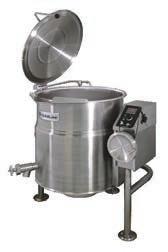
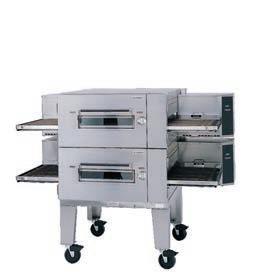







Farm-to-table dining is a trend that has been proliferating kitchens across America for years now. Eating local cuisine is not only healthy and more fresh — and it’s also delicious. Chefs have formed tight relationships with farmers who they trust to supply them with the very best product possible.
One type of farm-to-table dining that doesn’t always garner as much attention from the culinary world is that of farmto-school dining. According to the CDC, data from 2015-16 shows that one in five school age children is obese. This has to do with a number of factors — a more sedentary lifestyle, what they consume at home, but it also has to do with where they spend most of their time — school. Schools, farmers, food service companies, and even the government have a unique opportunity with school lunches to make change both on the ground and at policy level.
Forty-two percent of U.S. schools (approximately 42,587, estimated based on data from the 2013-14 USDA Farm to School Census) are participating in some farm-to-school element. With a more recent study on the horizon of being released, that number is expected to greatly increase.
According to the Farm to School Network, an information and advocacy hub that supports the movement, farm-to-table schools is defined as participating in at least one of the following: Local Procurement: Getting local food into school meals, including snacks and other meals beyond lunch. This can be a great partnership — steady clients for farmers and a win for the community.
School gardens: The school invests in edible gardens where the students can learn about growing food and try what is grown including farm field trips
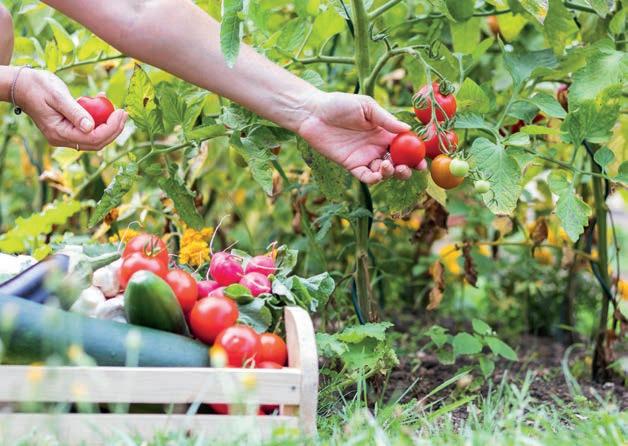
Passionate restaurant chefs are finding ways they can make a difference in schools as well. Here are some onthe-ground organizations, led by chefs, that are helping to change the way kids eat in schools.
Pilot Light: Started by well-known Chicago chefs Paul Kahan, Justin Large, Jason Hammel and Matthias Merges in 2010, Pilot Light serves underserved populations in Chicago Public Schools by partnering directly with the teachers to provide food education that intersects with subjects like math, history and science. Kids learn about new, healthier foods, and the group is able to educate their families as well. Over two dozen chef partners help to create and teach lessons with the organization. pilotlightchefs.org
The Edible Schoolyard Project: Legendary California chef Alice Waters partnered with a Berkeley middle school in 1995 to build an edible garden which turned into a national organization that encourages schools to partner with local farmers, teach kids the value of food, gardens and farms and hopefully provide free, sustainable lunch to all K-12 students. She uses that original Berkeley location as a place to train chefs in both the garden and cafeteria. The advisory board is a well-known list of chefs and celebrities across the country. edibleschoolyard.org/
Wellness in the Schools: New York chef Bill Telepan partnered with executive director Nancy Easton to form Wellness in the Schools (WITS), currently serving five states. The overarching goal is to decrease obesity, and chefs work with various schools to help them revamp their cafeteria menus. wellnessintheschools.org
Common Threads: Co-founded by Chef Art Smith, this organization gets students and their families involved in learning about proper nutrition and fighting obesity. They have various in- and after-school programs, like healthy cooking lessons for kids, parents and teachers. The goal is to be able to bring the understanding home as well as in the classroom. commonthreads.org
this trend goes beyond farm-to-table dining and how chefs can help
Education: The school makes it a priority to add in education related to agriculture, food, health and nutrition. Education is perhaps the easiest piece, but to run a full-scale procurement can be challenging with both federal and state regulations to abide by.
The Burlington School Food Project, which helps connect schoolchildren and their families with nearby farms by bringing more fresh local foods to cafeterias and more hands-on agriculture education to classrooms, has been operating out of Vermont since 2002. The whole district now offers farm-toschool food in some capacity, and they also offer free breakfast and dinner to students as well.
“The most challenging thing is the procurement regulations,” says Heather Torrey MS, RD, SNS, assistant director of the project. “We are given some very specific guidance on how we purchase products.”
The group often faces challenges around small farms who can’t always deliver as frequently as a grocer. That’s where working with a chef, which they are lucky enough to have, comes in handy.
“When I make the menus, I consult with her to help guide the menu in a way that the kitchen team knows how to execute, while I focus on the nutrition and dietary needs,” says Torrey. The staff has a lot of creative liberty in the kitchen, and Torrey makes sure they abide by allergy and nutrition standards.
Even the USDA is behind this movement, offering grants each year to schools that want to participate in the program — providing much needed funding where it may not always be found.
As this movement continues to pick up speed, it’ll not only be food educators and nutritionists involved, but chefs, too — either in a consulting or executive chef role. With an expanded platform for farmers, healthier kids, and hopefully an increased interest in food from seed to plate, this movement has potential to reach far beyond the classroom.
Introducing the most exciting, inspiring foodservice trends of 2019!


After scouring the globe for incredible flavors, analyzing consumer preferences and examining influential menus across channels, Custom Culinary® is proud to present ten trends we expect to make a major impact in the year ahead.



If you’re a chef who loves innovation, try your hand at incorporating seaweed on your menu. And we’re not talking about nori sushi wrappers. Consider the ways which chefs in London, Copenhagen and Madrid are using it: lamb ribs with mint and seaweed jelly, risotto infused with sea vegetables, and a sea lettuce cookie amuse bouche. Seaweed is a nutritionally rich food that includes naturally high levels of calcium, antioxidants, and more. Not only is it good for you, but it presents tremendous opportunity for chefs eager to develop their knowledge and innovate.
James E. Griffin, a professor of food and beverage management at Johnson & Wales University in Providence, RI, notes that the most commonly used seaweeds are kelp, nori, sea lettuce, dulse and alaria, which are most often sold dry. Up to 90 percent of all seaweed sold in the United States is imported from Asia, though Maine and Alaska are both home to seaweed industries, so it is possible to buy it locally.
By Lauren Kramer
Griffin recommends going local, and purchasing from sources that regularly test their wild or farmed sea vegetables for heavy metals and toxins. “Sea vegetables are bio-accumulators and they can accumulate pollutants if they come from areas in which those items frequently occur,” he says. “You can’t just walk to the seashore and gather what you think might be suitable. Some Asian-imported nori and seaweed isn’t tested at all — and that’s a dirty secret a lot of chefs don’t know.”

Seaweed can also contain particles of skeleton shrimp and other crustaceans, so those with shellfish allergies should avoid consuming seaweed.

If you’re wondering where to start, hit the books. Griffin suggests Barton Seaver’s “Superfood Seagreens” (2016) as a font of useful information and recipes. “We see them across the entire menu spectrum, including savory items, sweets, baked goods, fresh salads and soups. One of my favorite things to do is to take typically savory items and amplify them through powdered sea vegetables. For chefs, seaweed is something sexy and exciting — and something we don’t work with all that often.”





Sporting venues have a reputation for sleepy concession stands serving uninspired wings, burgers and hot dogs. Nowadays, though, with millions of dollars going toward building new or renovating old stadiums, ballparks and arenas, more funds are being invested in foodservice. As a result, chefs face the challenge of how to elevate their cuisine while still capitalizing on revenue-generating, sports-watching staples like hot dogs, wings, burgers and fries. We talked to a couple to find out how they get it done.
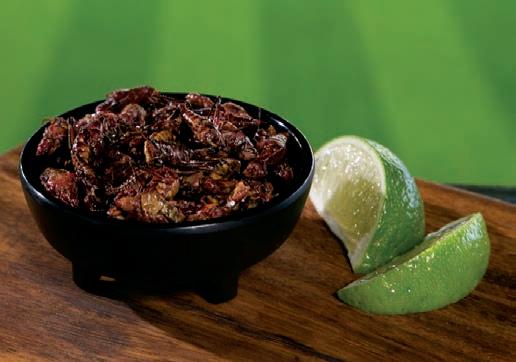
Taylor Park, executive chef for Centerplate, the foodservice operator at T-Mobile Park, home to MLB’s Seattle Mariners, sources everything from fresh fish to meat, vegetables and artisan

products from his nearby community. He knows that fans near and far are curious about the origins of their food.
“We are incredibly lucky to have a ton of farmland around us as well as local nuts, truffle mushrooms, chocolatiers, coffee and, this being Seattle, a wide variety of fresh, local seafood, so it’s very easy to source the best ingredients possible,” says Park. T-Mobile Park even has an urban garden at Safeco Field, where Park can pluck fresh leafy greens, herbs, radishes and more.
One might think a menu like this would make for higher menu prices, but Park says that’s not the case. He gives kudos to the Mariners for making the investment in foodservice, not just to generate more sales overall, but also to “ensure that the fans have the best experience possible.”
During a major re-design several years ago, Park and the Centerplate team banded forces with local restaurateur and James Beard Award-winning chef Ethan Stowell to consult on menus and concepts, knowing fans these days like a big name attached to their restaurant and food choices.
“I used to work at some of Ethan’s restaurants so we reached out initially, and now he brings in other local restaurants and chefs as well,” says Park, who manages a rotating selection of guest chefs to “take over” the dine-in club program for one game as a way to keep the high-ticket-price dinners fresh and new for season ticket holders and other repeat customers.
Effie Speigler, the recently-former executive chef for Spectra, which operates the foodservice program at the Oakland A’s Oakland Coliseum, wasn’t afraid to experiment with global flavors, knowing the diversity of the Bay Area and those who travel there.
“When you have a broad audience like this you have to keep flavors and cuisines in line, but it’s great to offer bring in different things to pique curiosity,” says Speigler, who also partnered with local food trucks to bring in fun foods to support a smaller main kitchen.
At the Mariners’ T-Mobile Park, two giant smokers each produce 1,000 pounds of barbecue items, including a long-bone short rib smoked for 18 hours that can be eaten off bone without utensils. Park has also expanded his order of grasshoppers — as in chili-lime-salted and roasted chapulines, a popular Mexican delicacy from Oaxaca — after they became a big hit with all fans.
The Coliseum was one of the first professional sports stadiums to carry Impossible Burgers, which happen to be produced in East Oakland just minutes from the ballpark. Speigler served the faux meat in the form of French onion-inspired sliders with caramelized balsamic onions, oil-cured tomatoes and brie spread on brioche, and he would also buy it in bulk for homemade meatballs or for use in Bolognese and tacos.
Speigler even ordered another grill to prevent cross-contamination, something about which he says some fans had expressed concern. Direct guest feedback like this also drives Park to make his decisions and menu tweaks. “I often walk around with a chef’s coat, so I’m a direct target for feedback and questions, and we also review social media accounts and get feedback from the players themselves,” he says.
As T-Mobile Park’s multi-level, onsite restaurant Edgar Cantina gets its name and inspiration from Mariner Hall-of-Famer Edgar Martinez, Park has likewise drawn inspiration from some of the players when developing certain menu items.
After talking to big-hitting player Daniel Vogelbach about some of his favorite foods, Park came up with the “Vogey Hoagie,” a smoked prime rib sandwich with jalapeño bacon, Mt. Townsend Creamery New Moon Cheese, Tillamook sharp cheddar, avocado crema, chipotle aioli and cilantro on an eight-inch baguette.
Chicagoans love their Italian beef; New Yorkers favor meatball, and of course, there’s the Philly-based cheesesteak sandwich. But does the geography mean these fan favorites can’t be explored in other cities? Definitely not.
“I would do a lot of research, talk to fans about what they might want to try and try to coordinate specials that spoke to the teams from other cities coming in that day,” Speigler says. “For example, when the Boston Red Sox were in town, we would do a Boston-inspired clam chowder and lobster rolls, and when the Yankees came to town, we would make a killer meatball sandwich. We also spun our own twist on a Philly cheesesteak sandwich.”
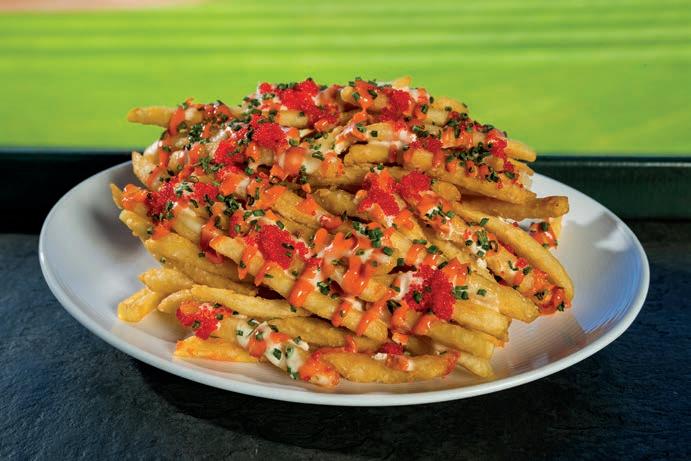
At Lincoln Financial Field, home to the Philadelphia Eagles, Aramark partnered with local celebrated chef Marc Vetri who developed a lineup of artisan pizzas from popular Pizzeria Vetri, like the sasicca taglio with roasted fennel and fennel sausage and one with thin sliced soppressata and fresh mozz.
Local celebrated chef Rocco Whalen at the Cleveland Browns’ FirstEnergy Stadium adds a twist to a sport-watching favorite with his Kimchi Dog, an all-beef dog topped with caramelized kimchi and chili aioli.
Executive chef Lenny Martensen adds barbecue shrimp to bread pudding for a savorier fan favorite at the MercedesBenz Superdome, Home of the New Orleans Saints.
The idea paid off. “Our local fans loved to try these new dishes, but we also were able to offer something familiar to fans coming in from elsewhere,” he says.
Nothing beats a hot dog and a beer at a ballpark, but sporting venues, these days, know better; as fans spend more time onsite, either in season ticket seats or at an event at the club, they’re demanding more — and better — choices than ever before. Sports venue chefs are stepping up to the plate.
Libbey® knows the grit, gusto and ingenuity it takes to transform a vision into success. Like you, we never stop striving to serve the experience to its fullest. Discover forward-looking tabletop solutions that seize the opportunities of today and tomorrow at foodservice.libbey.com
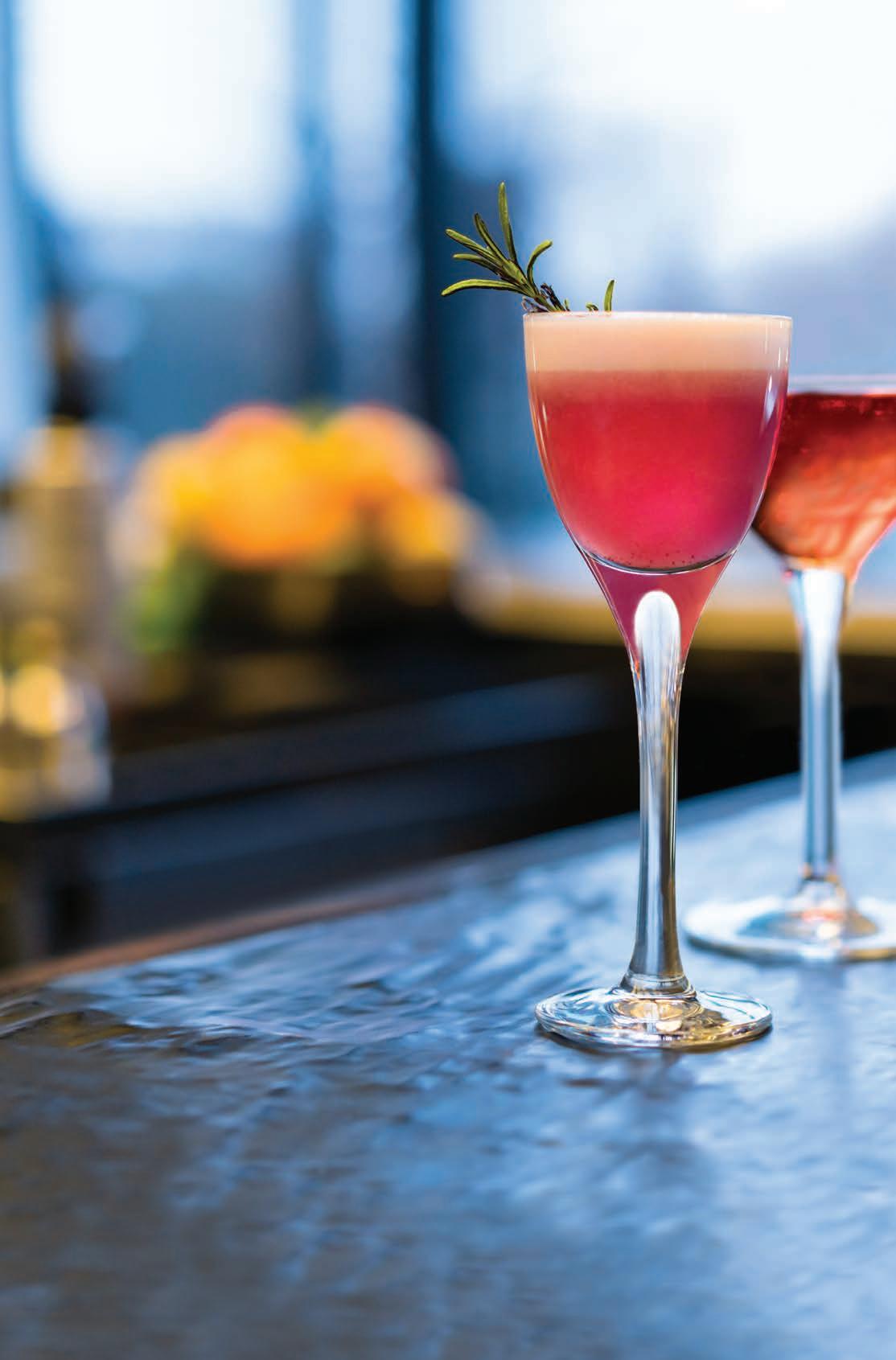
Discover the possibilities at foodservice.libbey.com
 © 2019 Libbey Inc.
© 2019 Libbey Inc.




Marriott World Center
August 4 - 8, 2019

CHEF DE CUISINE








Marco Pierre White

Dubbed the godfather of modern cooking, the first rockstar chef and original “enfant terrible,” Marco Pierre White is a renowned chef, restaurateur and TV personality. He has led the UK restaurant scene for over 30 years and is regarded by many to have single-handedly dragged it into the forefront of modern gastronomy.
White helped kick-start the careers of many famous chefs including Gordon Ramsay, Heston Blumenthal and Jason Atherton, all of whom trained under him. His acclaimed book “White Heat” is regarded as having influenced the careers of several Michelin-starred and celebrity chefs, being described by one critic as "possibly the most influential recipe book of the last 20 years.”
Following his retirement in 1999, White took time out to spend with his family and enjoy his hobbies, fishing and shooting. In 2007 he jumped back in to the public eye with major TV roles in “Hell's Kitchen,” The Great British Menu” and “Australian MasterChef.”
Duff Goldman
Duff Goldman is a chef, artist, entrepreneur and TV personality.
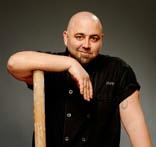
Duff’s first major foray into television was on the hit Food Network show Ace of Cakes, which took place in his famed Baltimore bakery, Charm City Cakes.
Goldman currently stars in several shows on Food Network, including “Cake
Masters” and the “Baking Championship” series. He recently completed his second book, “Duff Bakes,” a follow up to the New York Times bestseller, “Ace of Cakes: Inside the World of Charm City Cakes.” Duff can be seen making appearances at food festivals, celebrations, and other major events around the country.
An avid outdoorsman with an unmatched zest for life, Chef Eduardo Garcia is a testament to the power of the human spirit in the face of adversity. A classically trained chef who found his passion for cooking at an early age, Garcia cut his teeth in the industry at just 15 years old; husting over hot pans, flipping burgers and throwing pizzas. His path, however, took a drastic turn in 2011. While elk-hunting in the Montana backcountry he received a catastrophic electrical shock from a 2,400-volt power line.
Months of intensive care, the amputation of half of his left arm, removal of several ribs and even a cancer diagnosis could not keep Garcia down. Nowadays, he can be found hunting, fishing, cooking, and delivering motivational speeches around the country.

This year’s AAC Culinary Hall of Fame Celebrated Chef, Gale Gand is a nationally acclaimed pastry chef, restaurateur, cookbook author, television personality, teacher, entrepreneur and mother. Gand has been recognized as Outstanding Pastry Chef of the Year by The James Beard Foundation and by Bon Appetit
magazine. She has been inducted into the Chicago Chefs Hall of Fame and was a 2017 recipient of the Women Driving Excellence award.

Gand is the founding pastry chef and partner of the beloved Chicago restaurant Tru, which quickly became a sensation among Chicago’s fine dining community and has earned ecstatic praise from reviewers, receiving accolades from the James Beard Foundation, the Michelin, Mobil and AAA guides and more.
Gand is a prolific cookbook author with eight titles to her credit, including her most recent, “Gale Gand’s Lunch!,” released in April 2014.
Scott
Elle Simone
Scott is a culinary maverick. Always drawn to creative food culture, she has been dazzling the culinary world since 2003, quickly becoming a highly sought after freelance Food Stylist and Culinary Producer.
Scott has collaborated and contributed her unique styling abilities to Food Network, Food Network Magazine, The Cooking Channel and many more. But her specialties don’t stop with styling and production. As the creator of SheChef Inc., a professional networking organization for women chefs of color and allies, she shares her passion by mentoring, teaching resource building, business consultation/ development and most importantly, food social justice.
Scott continues to inspire others and break glass ceilings, as she is currently the resident food stylist and on-air talent on
PBS’s “America's Test Kitchen” — the first African-American woman to do so.
Edward Lee
Chef Edward Lee is the chef/owner of 610 Magnolia, MilkWood and Whiskey Dry in Louisville, KY and the culinary director for Succotash in National Harbor, Maryland and Penn Quarter, DC. He is also the Executive Chef of Salt Restaurant in Antigua.
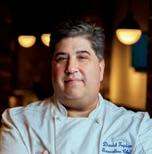
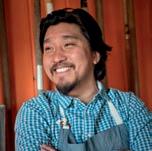
Lee has received multiple finalist nominations for the James Beard Foundation Awards Best Chef: Southeast. He appears frequently in print and television. Lee is the author of “Smoke & Pickles: Recipes and Stories from a New Southern Kitchen” and “Buttermilk Graffiti: A Chef’s Journey to Discover America’s New Melting Pot Cuisine.”
Lee also runs the non-profit The LEE Initiative which promotes equality and diversity within the restaurant community.

Michael Sohocki
Michael Sohocki, chef-owner of Restaurant Gwendolyn and co-owner of Kimura and Il Forno, developed his commitment to sustainability and authenticity over a lifetime of experiences that stretches from the Texas Gulf Coast to Japan.
Star Chefs named Sohocki a Rising Star Sustainability Chef in 2012 and the following year, the James Beard Foundation selected him as a semifinalist for Best Chef-Southwest. In 2013, he and his partner Jenn Wade opened Kimura, an izakaya and ramen shop, which presents a Japanese experience previously unknown in San Antonio.
Jennifer Booker
Chef Jennifer Hill
Booker has taken her Southern culinary heritage, her belief in healthy, seasonal foods and her classic French training to create a unique cuisine — Modern Southern Healthy Cuisine with a French Accent. Booker’s style is a modern reinvention of Southern cuisine that incorporates the traditional use of seasonal ingredients, important to maintain a healthy lifestyle, with French culinary techniques she learned at the Le Cordon Bleu College of Culinary Arts in Paris.
Booker has published two cookbooks: “Field Peas to Foie Gras: Southern Recipes with a French Accent” and “Dinner Déjà Vu: Southern Tonight, French Tomorrow.”
Eric Fleishman
Eric Fleishman (a.k.a. Eric the Trainer) began his fitness career as a 98-pound weakling living in rural Maine. That start initiated a lifelong passion with martial arts that would eventually lead him to Hollywood, California.
Fleishman spent five years working as a personal trainer (certified through ACE and TSI) in Manhattan, and it was there that he began to develop a genderspecific workout regimen. For the past several years, he has been a committed supporter of the health and wellness initiatives of ACF and transforming the bodies of our chefs.
In 2018, he was awarded the ACF "Spirit of Aloha" award at the National Convention in New Orleans for his ongoing work to improve the lives of ACF chefs.
David Topian
Chef David Topian started cooking professionally when he was 16 years old and graduated from the Culinary Institute of America in 1988 with a degree in classical French cuisine. After school, he worked in various French restaurants in upstate New York, where he became highly interested in baking and pastry.
Now in cannabis, Topian has taken the same approach that he’s always had to pastry: Use the finest ingredients to craft delectable confections for everyone to enjoy.
Adam Kaye
Adam Kaye’s journey to The Spare Food Co. began when he interrupted a nascent career at an environmental law think tank to attend the French Culinary Institute as a recipient of a James Beard scholarship, and went on to cook in and lead some of the most influential kitchens in DC and NY.
For the past 18 years Kaye has worked at Blue Hill Farm as chef, culinary director and educator. Adam co-created the successful wastED pop-up restaurant concepts in New York and London, which garnered international acclaim, and has inspired him to launch The Spare Food Co., putting him at the forefront of culinary innovation in the burgeoning food waste movement.
See more and register today at acfchefs.org/convention.
Which chef presenting at the 2019 National Convention has been dubbed the “godfather of modern cooking”?
a. Marco Pierre White
b. David Topian
c. Michael Sohocki
d. Gale Gand
Which chef presenting at the 2019 National Convention is at the forefront of culinary innovation in the burgeoning Food Waste movement?
a. Du ff Goldman
b. El le Simone Scott
c. Jennifer Booker
d. Adam Kaye
According to the CDC data from 2015-16, _________school age children are obese.
a. one in t wo
b. one in four
c. one in f ive
d. one in seven
According to the Farm to School Network, farm-to-table schools are defined as participating in____.
a. getting local food into school meals
b. the investment of an edible garden

c. education related to agriculture, food, health and nutrition
d. al l of the above
What organization helps connect schoolchildren and their families with nearby farms by bringing more fresh local foods to cafeterias and more hands-on agriculture education to classrooms?
a. The Burlington School Food Project
b. Farm to School Network
c. Pilot Light
d. The Edible Schoolyard Project
Which chef co-founded Common Threads?
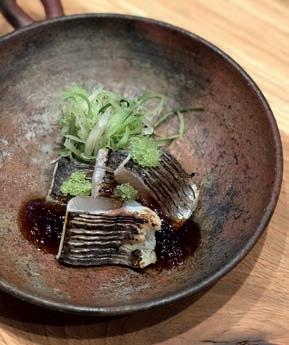
a. Bi ll Telepan
b. A rt Smith
c. A lice Waters
d. Matthias Merges
According to an analysis by Kantar Worldpanel, sales of cider and beer with less than 1.2 percent alcohol spiked by what percent?
a. 10%
b. 20%
c. 30%
d. 40%
Which of the following is NOT a good substitute for alcohol in “booze free” drinks?
a. g inger ale
b. grapefruit juice
c. tea
d. sugar
The Grand Floridian Resort includes ___ foodservice locations.
a. 5
b. 7
c. 9
d 11
What percentage of schools are participating in some farm-to-school element?
a. 33%
b. 42%
c. 49%
d . 62%
What new trend is making waves at the bar?
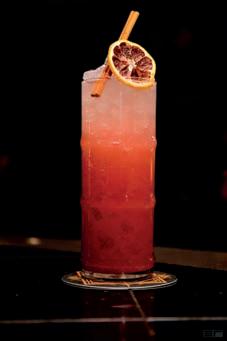
a. low- and no-alcohol drinks
b. heavier drinks
c. breakfast flavored drinks
d. none of the above
Kadence is known for what type of cuisine?
a. Sushi
b. Classical French
c. Tex-Mex
d. Traditional Southern

In a column called “Standardization of the Culinary Profession” printed in the March 1972 issue of “Today’s Chef” (a magazine produced by the Chef’s Association of Pittsburgh in the 1960s and ‘70s), Ferdinand Metz, CMC, AAC wrote that he had recently been appointed to a committee “whose task is to establish a program of standardization or classification of Chefs in the United States.”
Metz noted that the subject was heavily debated and controversial. Who would set the standards? Would chefs want to take these tests? Who would pay for the system and do the administrative work?
But he also knew the subject was an important one. “We have a situation where a chef can take a nationwide administered examination, which if passed, will certify a degree of professional qualification,” he wrote. “As a result of his effort, an individual can experience a higher degree of satisfaction and pride, increased monetary compensations, and proper recognition within the industry and community.”
That year, Wolfgang Von Dressler, AAC, submitted the Certification proposal to the ACF Board for consideration and six levels of certification were recognized: CEC, CEPC, CCC, CWC, CCE and CMC. Jan Verdonkschot, CEC, was named Certification Chair. In 1974, the program was made available to the ACF membership.
By the end of the next year, the program was up and running. Proto-CEHs were offered at the ACF National Convention in Portland. The ACF’s “Culinary Review” (then a 12-page, blackand-white newsletter) proclaimed in December 1975, “We are proud of the many chefs in American Culinary Federation who have already achieved certification, and the hundreds of others who are now attending classes in order to become certified. It is from the ranks of those forward looking Certified Executive Chefs, will come the Culinary leaders of tomorrow.”
Two hundred and fifty-three chefs were certified in the 1970s. Today, 45 years after the program launched, more than 10,000 chefs have been certified and is still recognized throughout the industry as the standard for excellence in professional skills and knowledge.
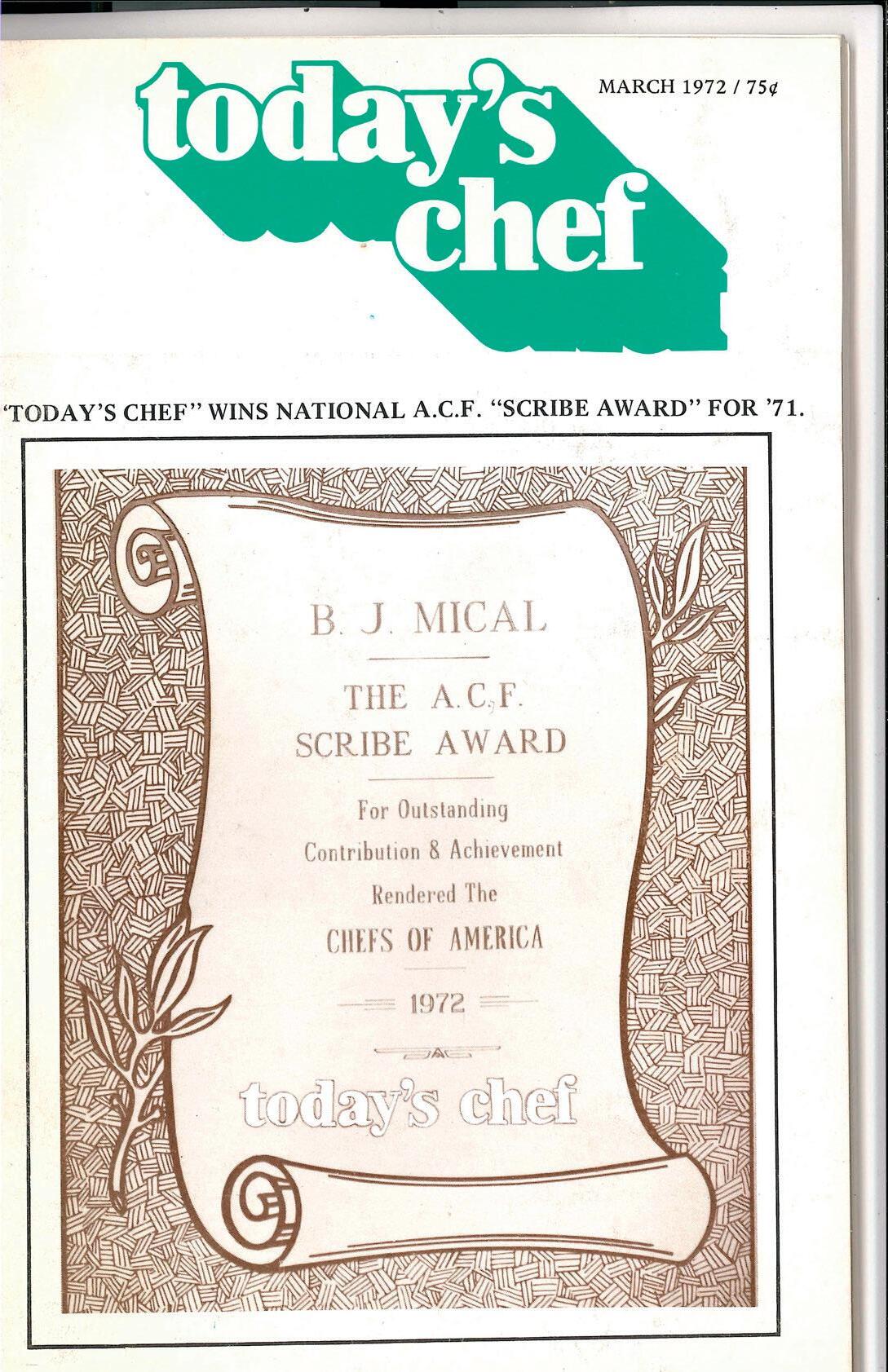



Since the first bottle of TABASCO ® brand Original Red Sauce was handcrafted in 1868, it has been the pepper sauce loved by people around the world. From our home on Avery Island, Louisiana, to every corner of the globe, it’s the bold choice for flavor enthusiasts looking to make their meals as unique as they are.

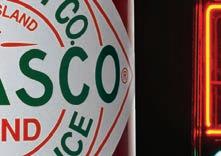









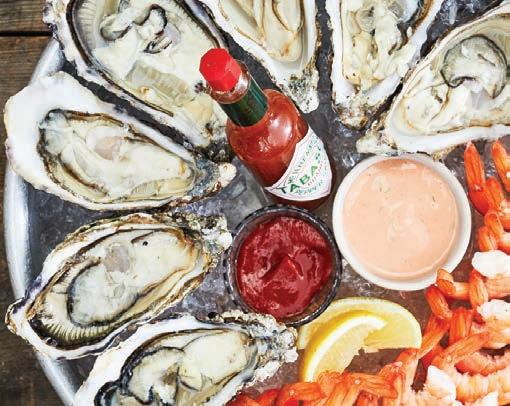
TABASCOfoodservice.com
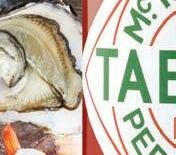










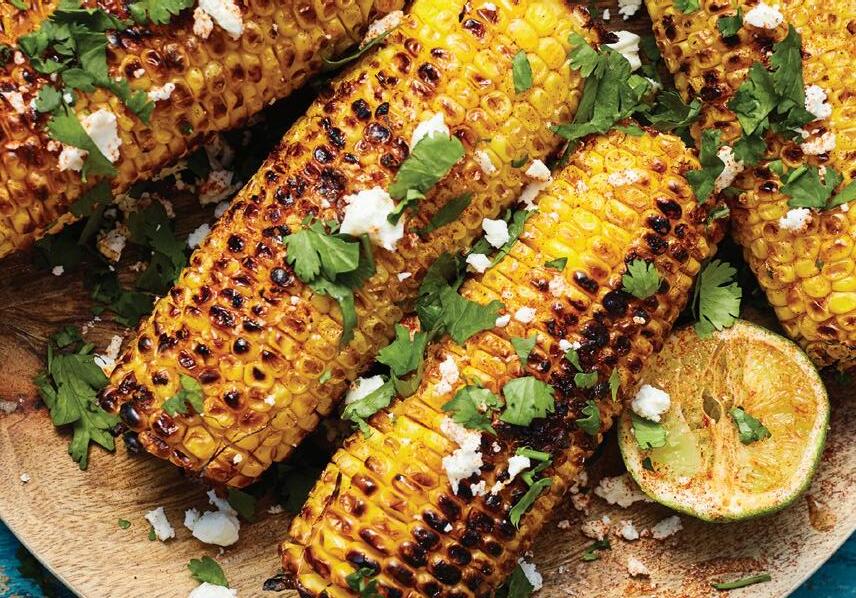
Filled with the savory tastes of roasted vegetables, sautéed onions and select herbs, Minor’s® Flavor Concentrates add rich, distinct flavor to your soups, sauces and sandwiches. Choose from a variety of Classic or Latin blends, then stir into your hot or cold recipes to easily elevate flavor without the added step of cooking.
Flavor Integrity | Versatility | Ease & Consistency

To learn more about Minor’s Flavor Concentrates, visit flavormeansbusiness.com or call a Minor’s Chef at 800.243.8822.
